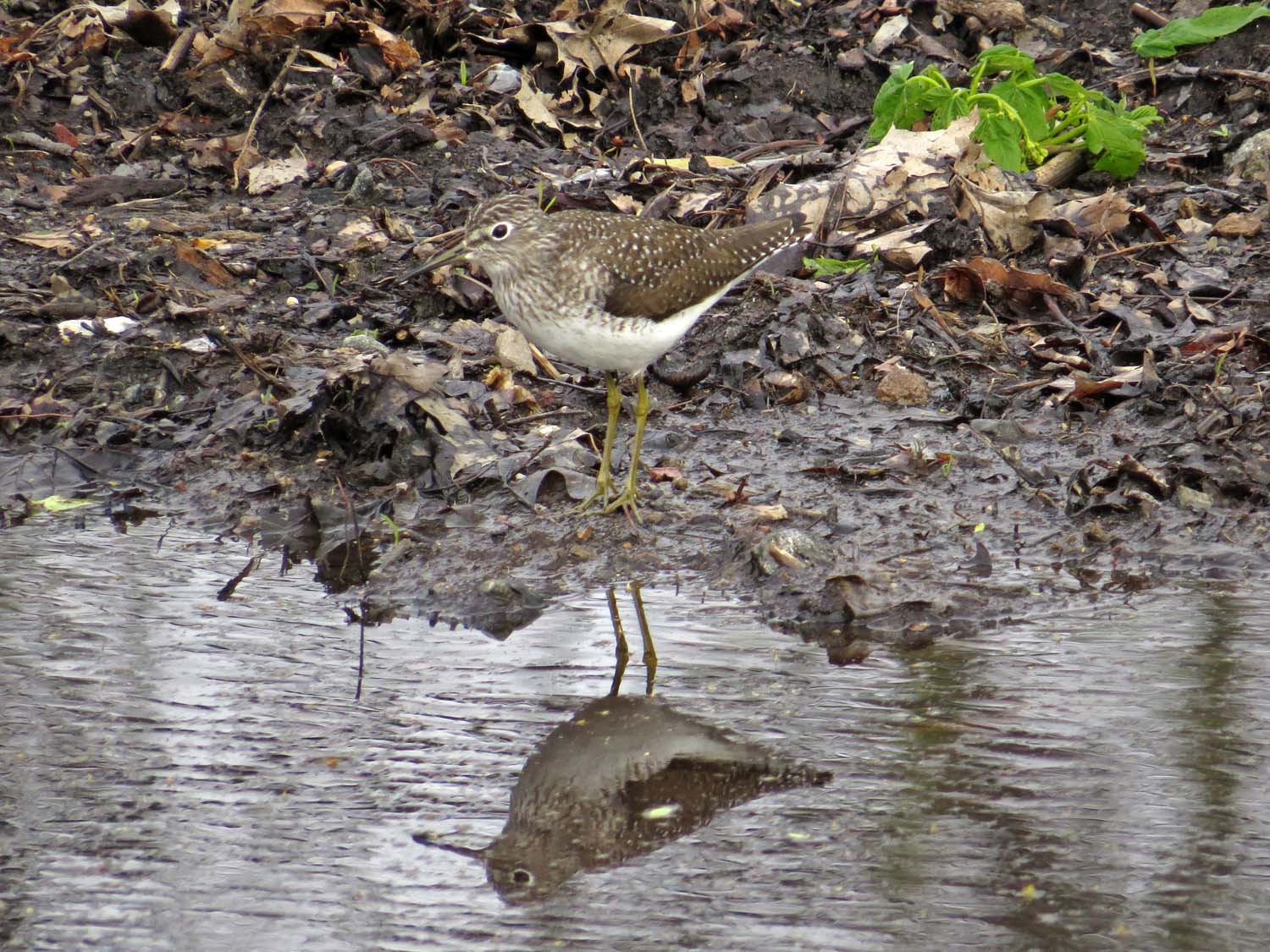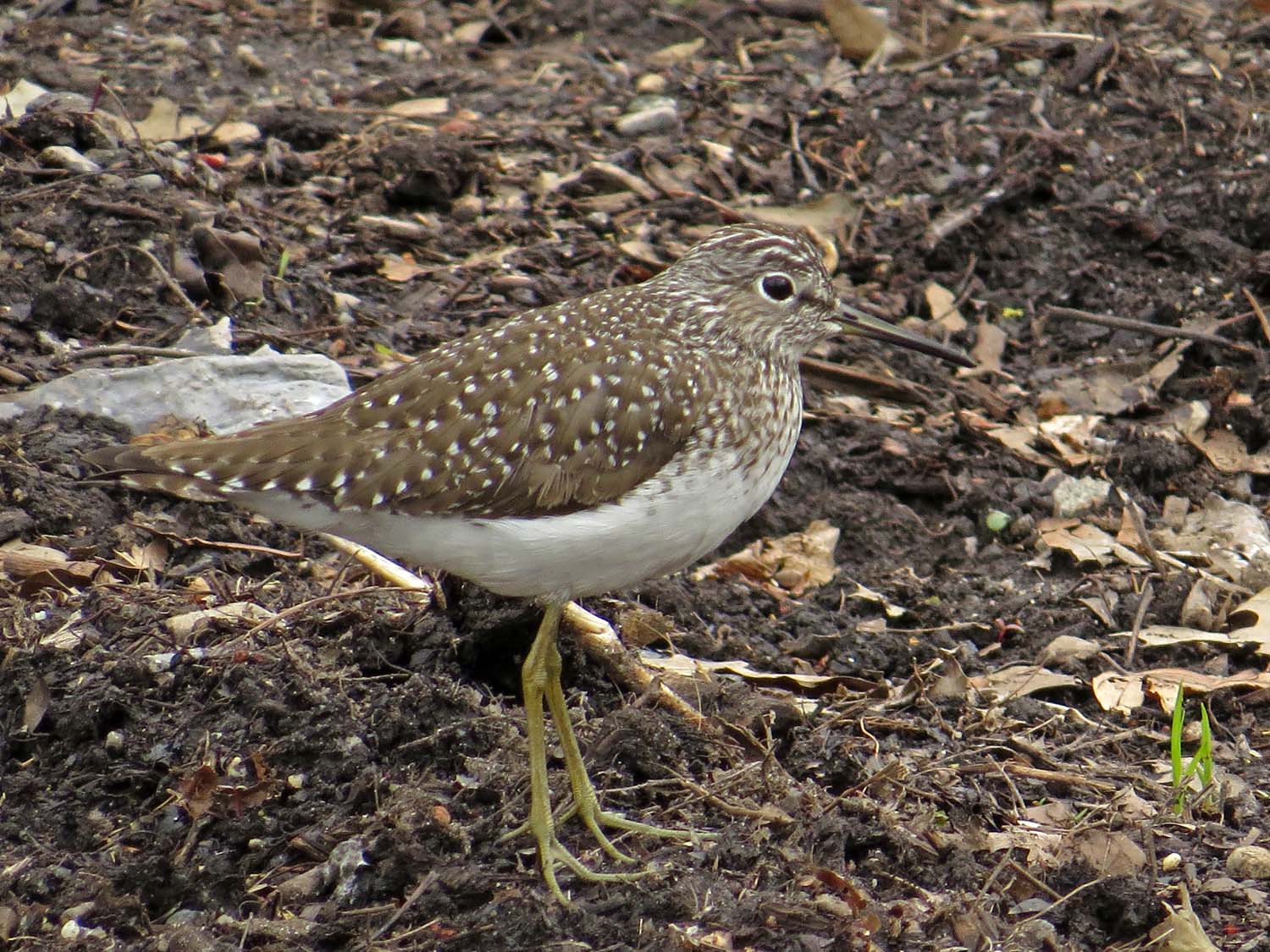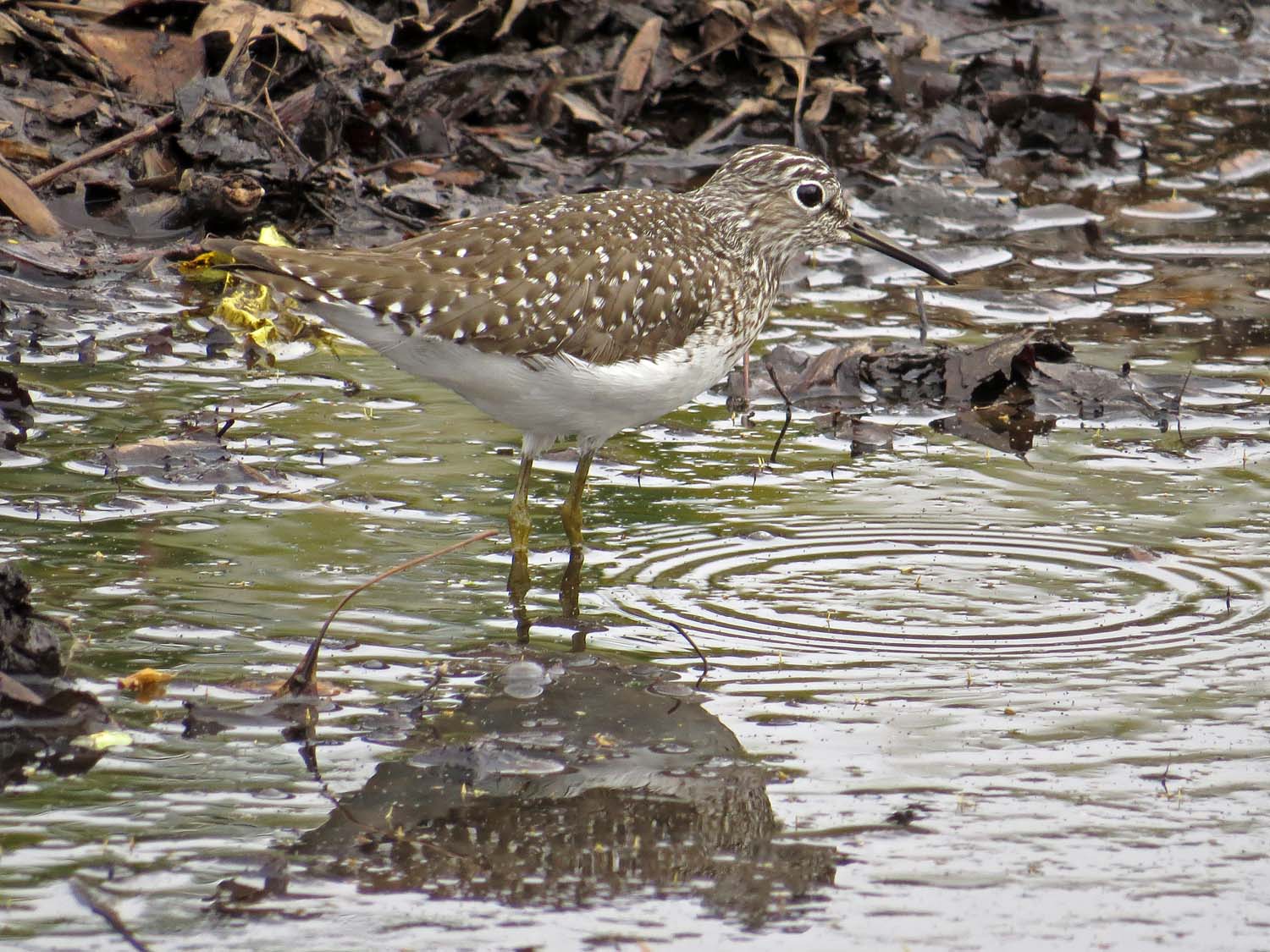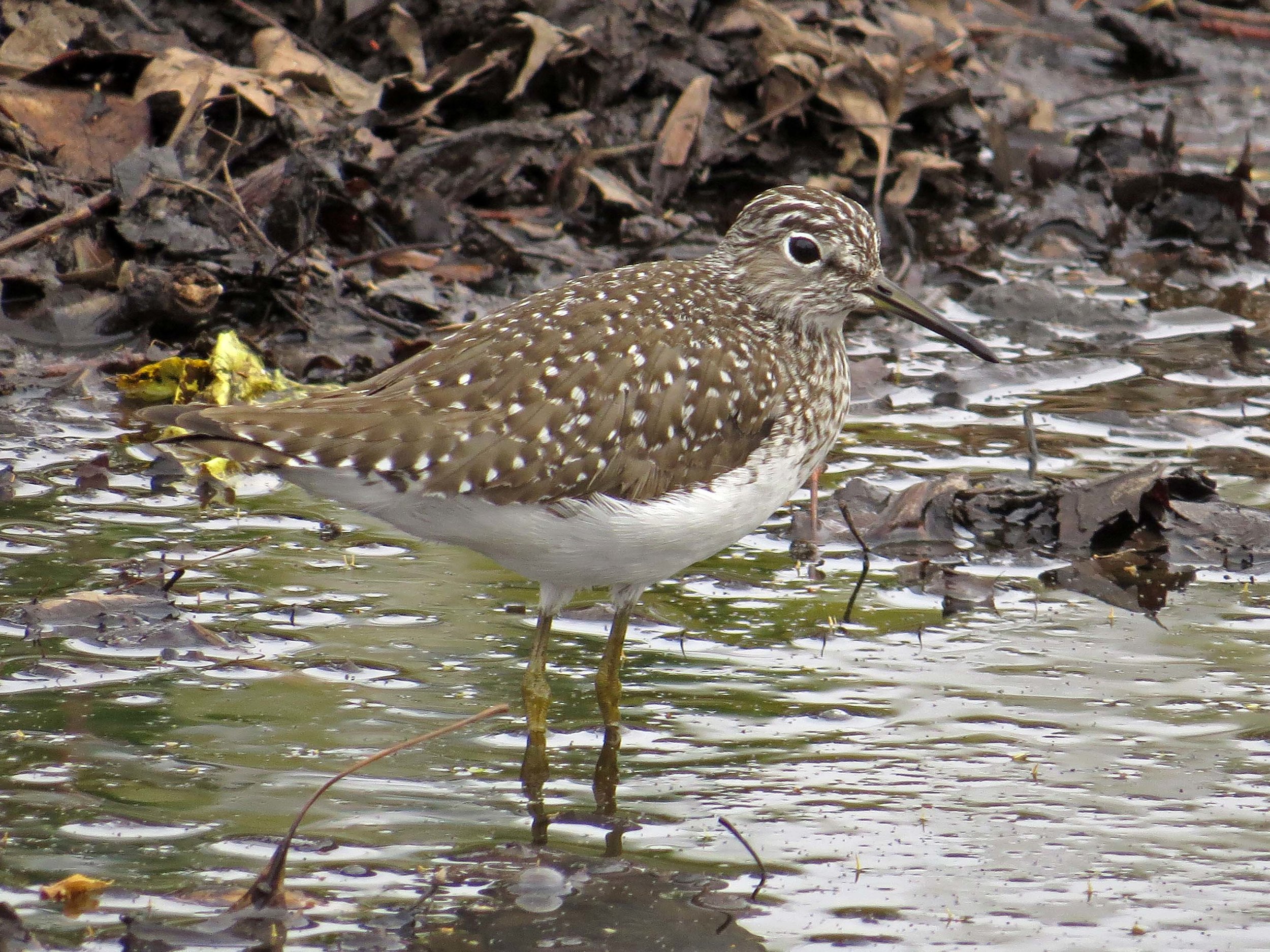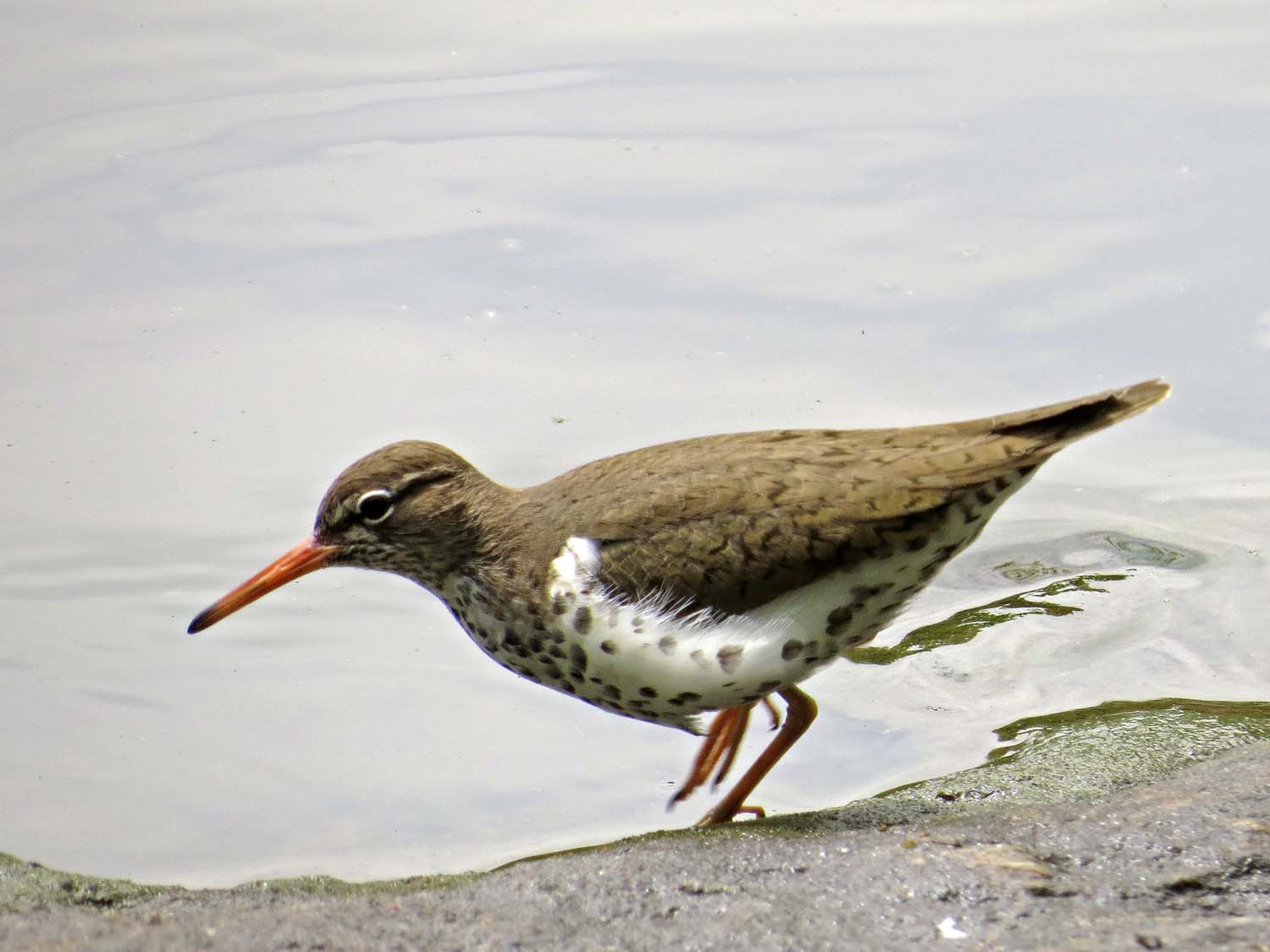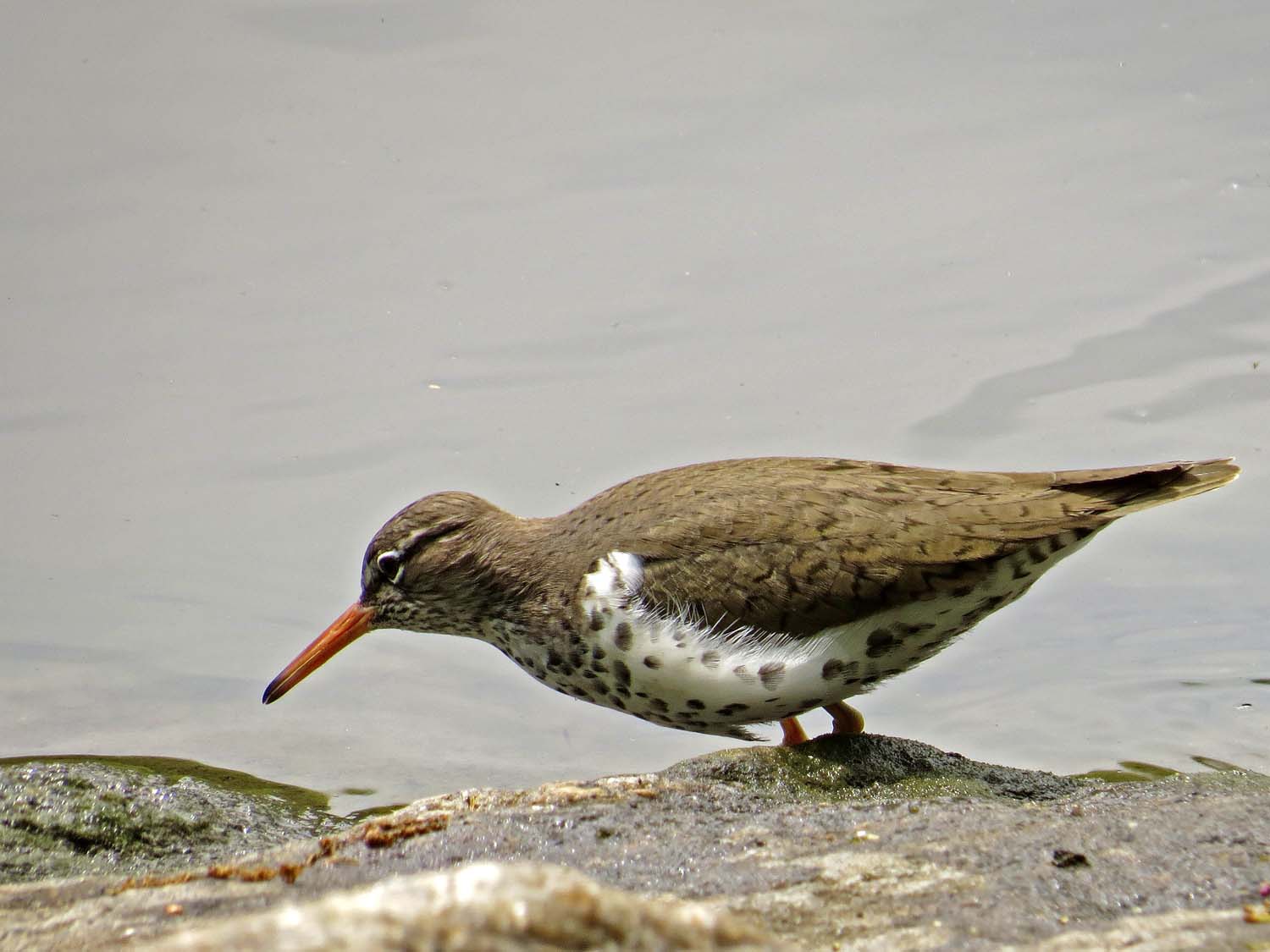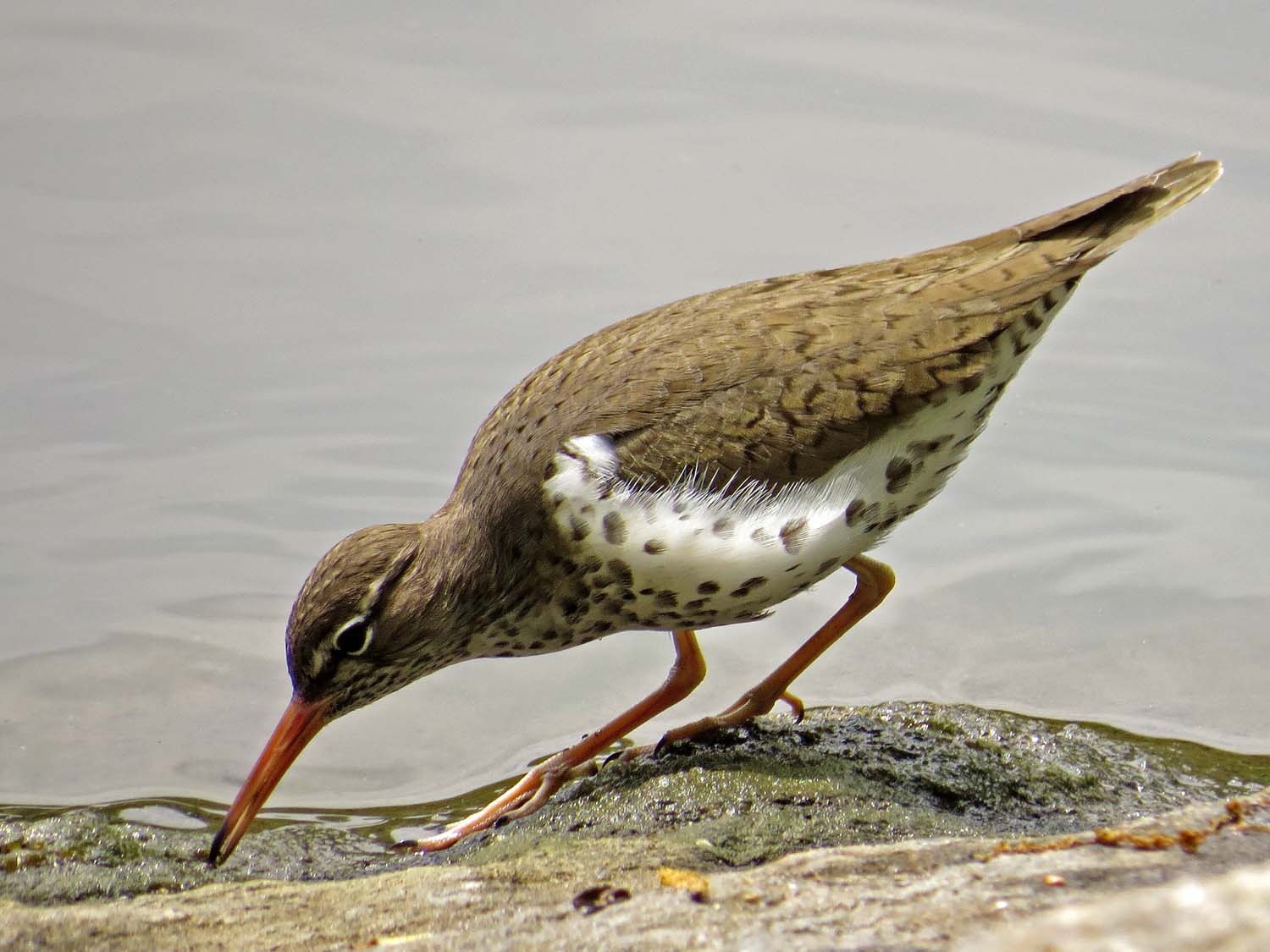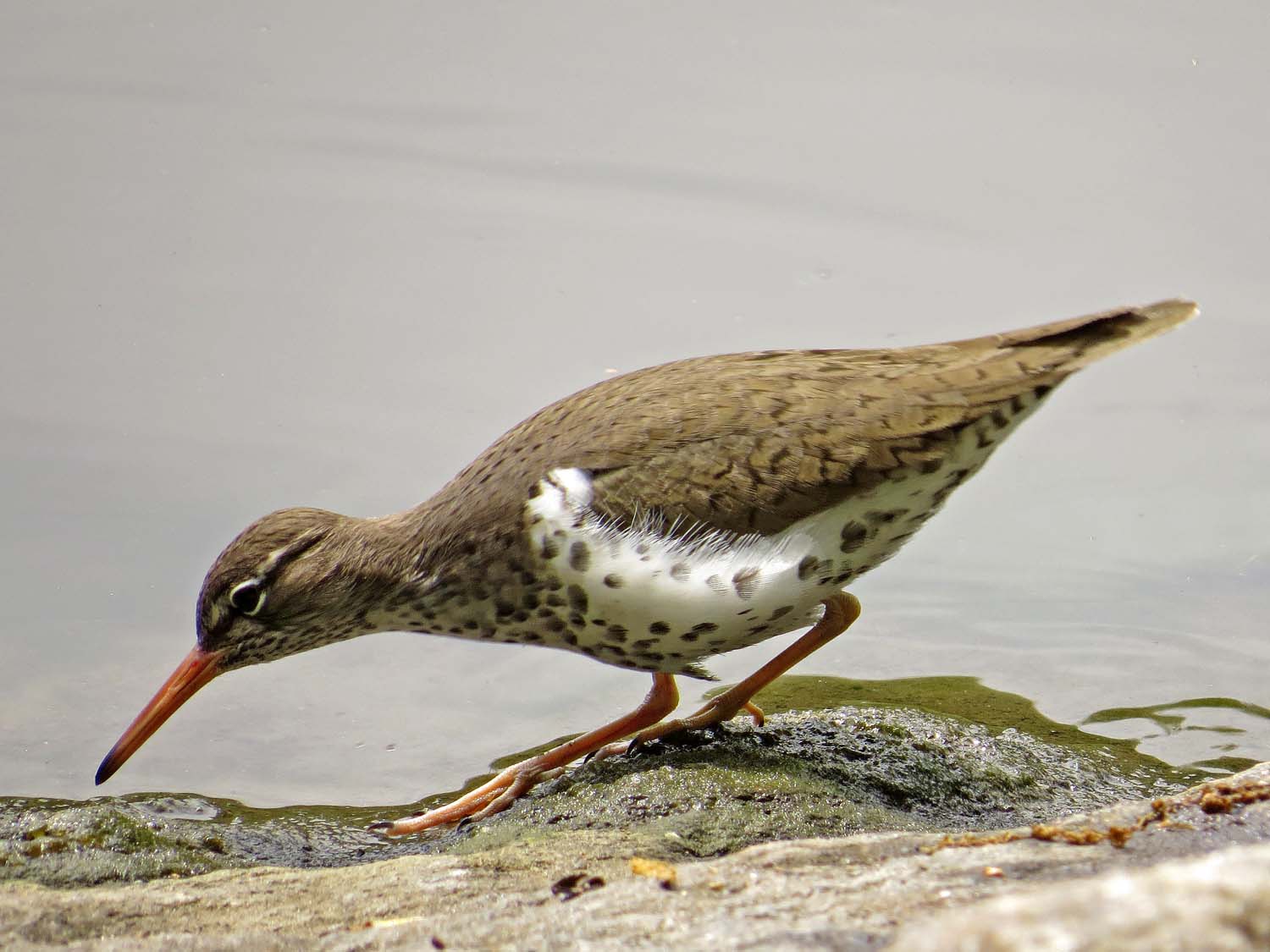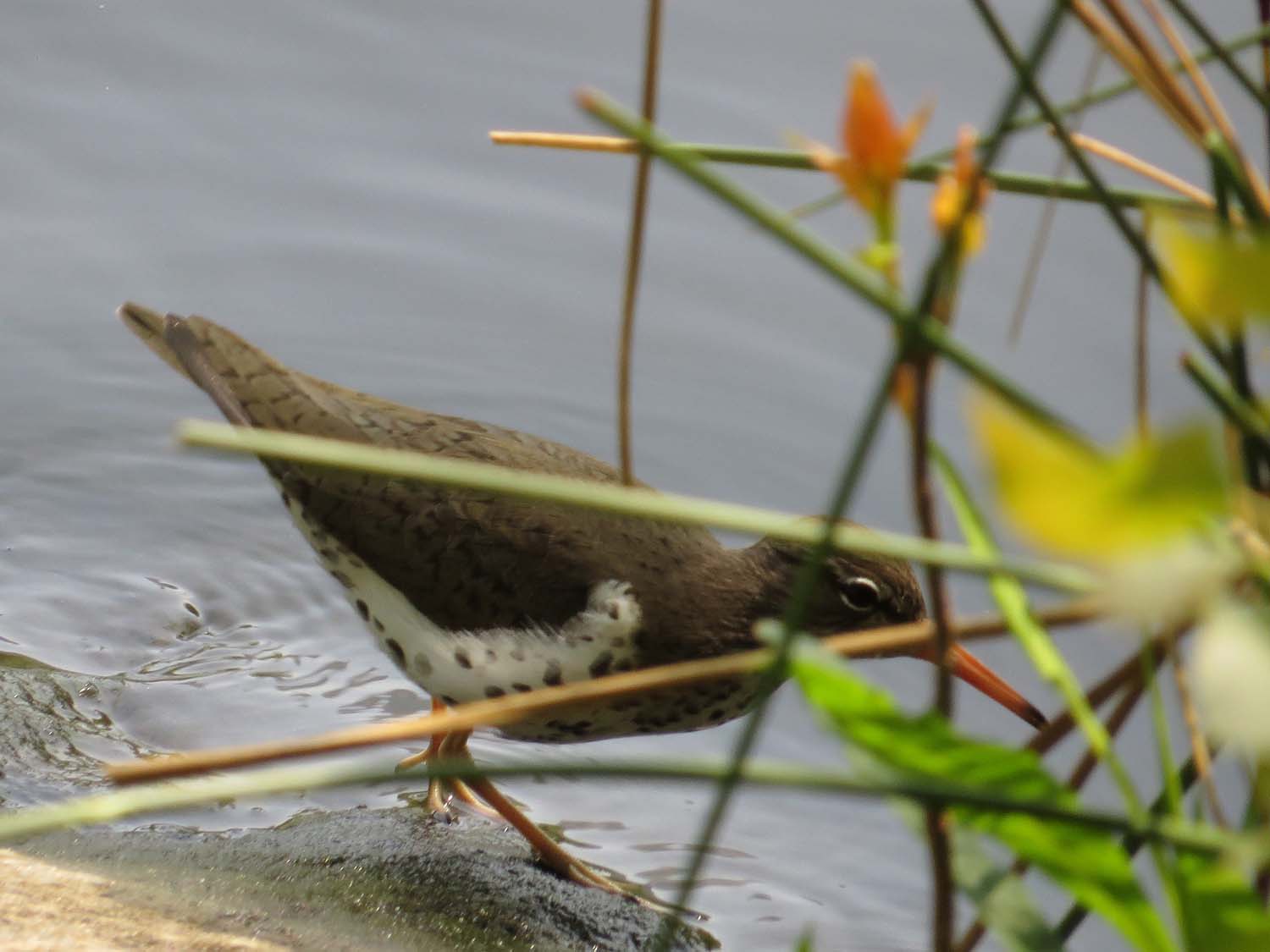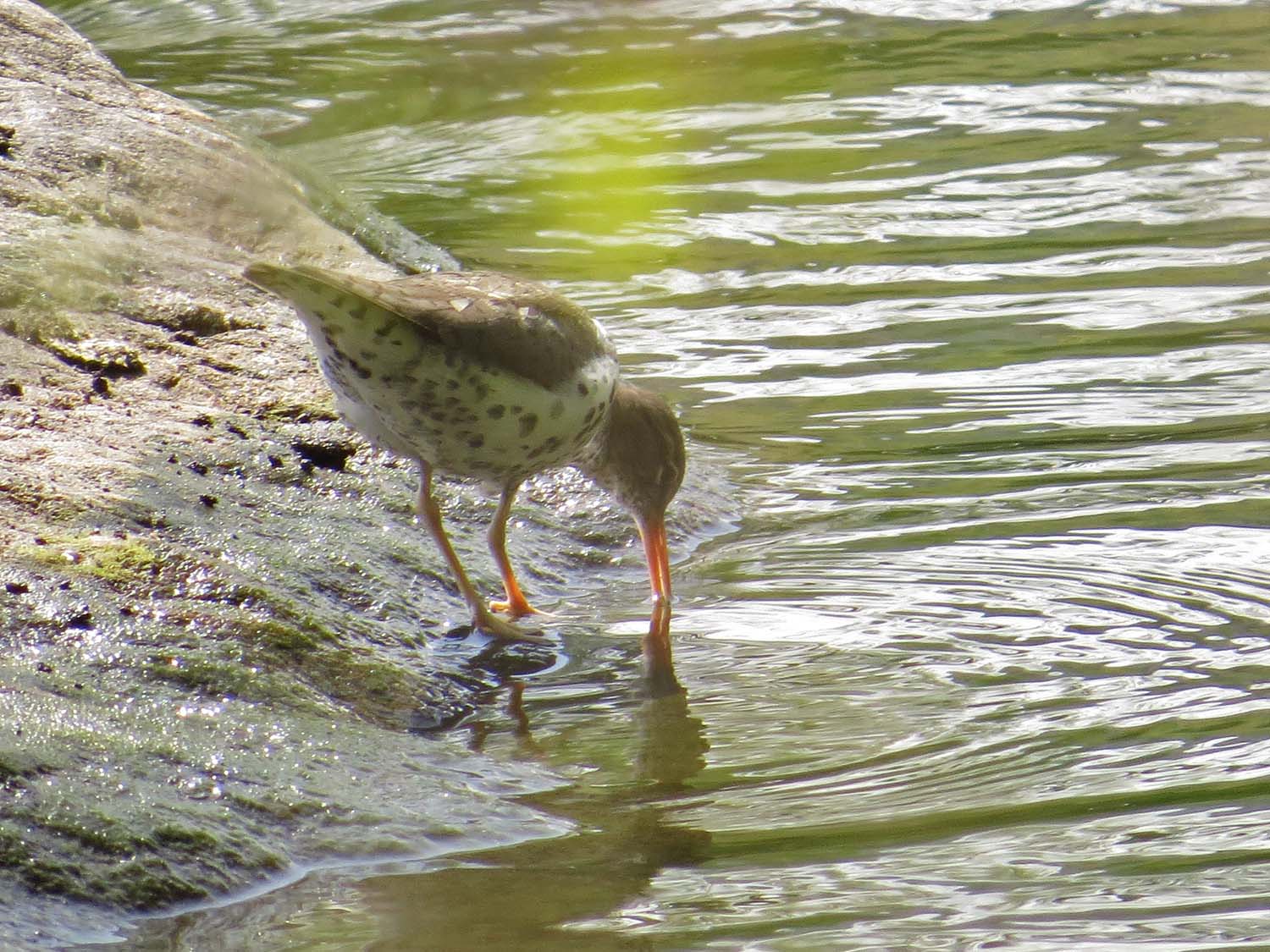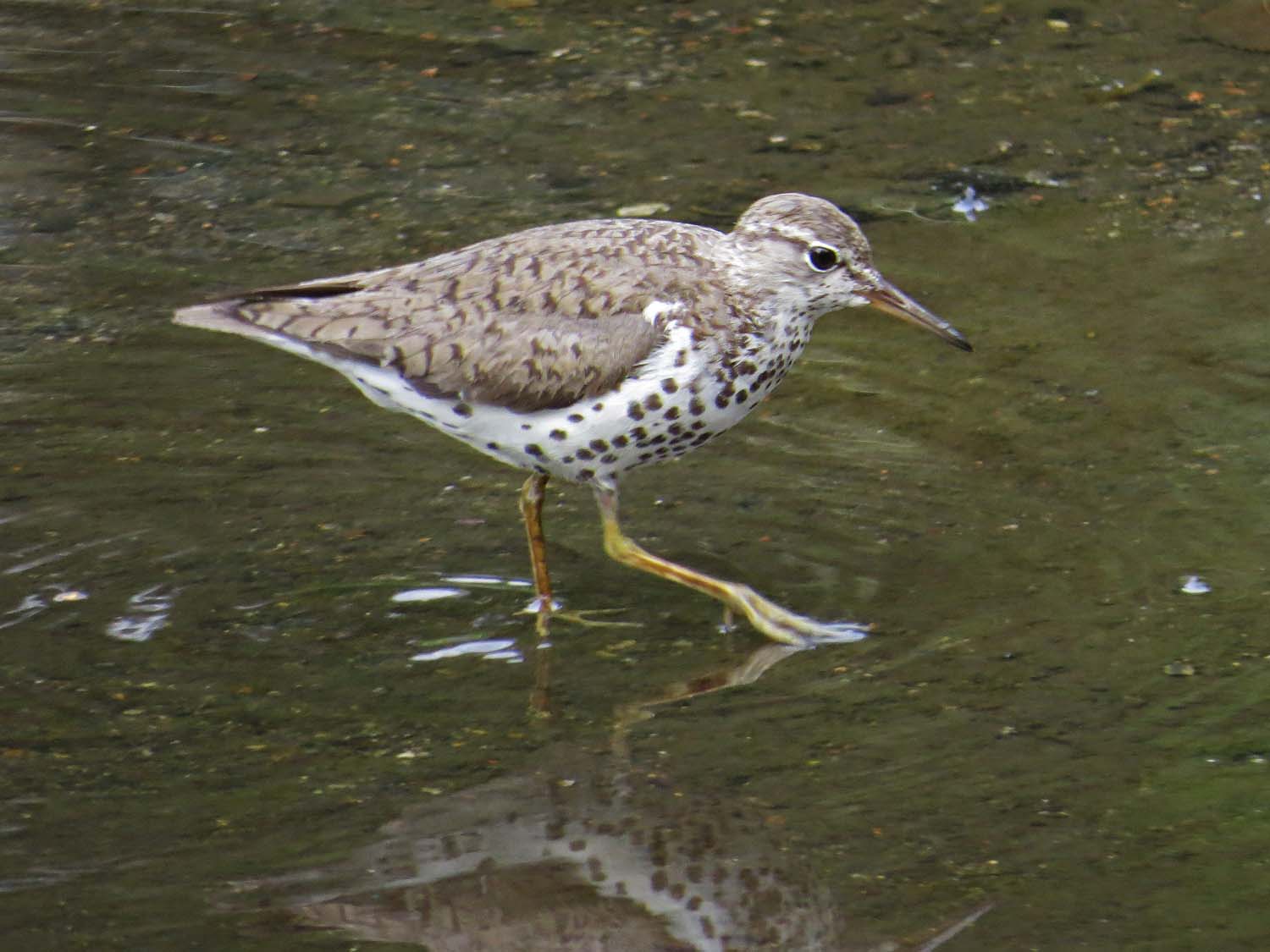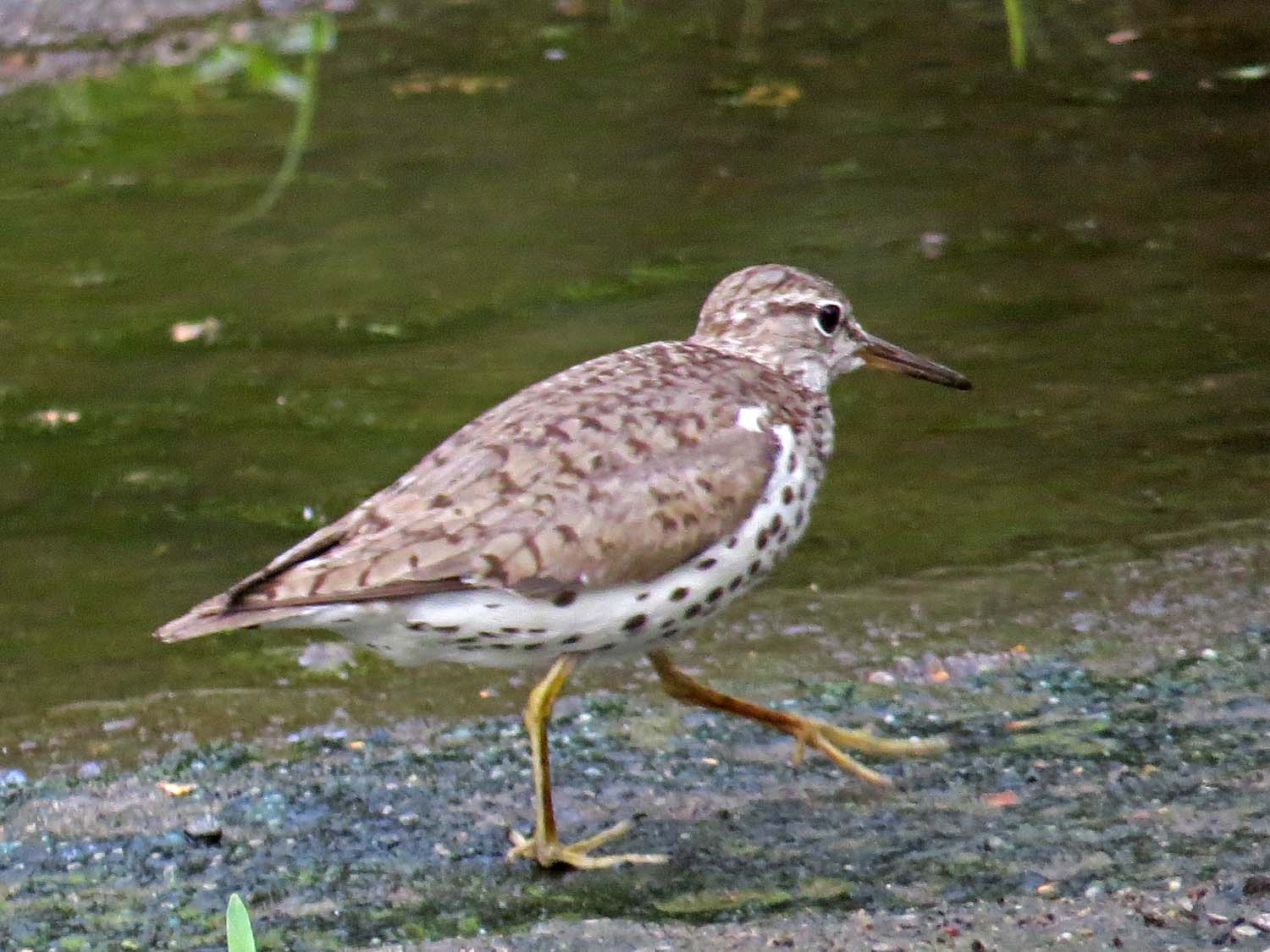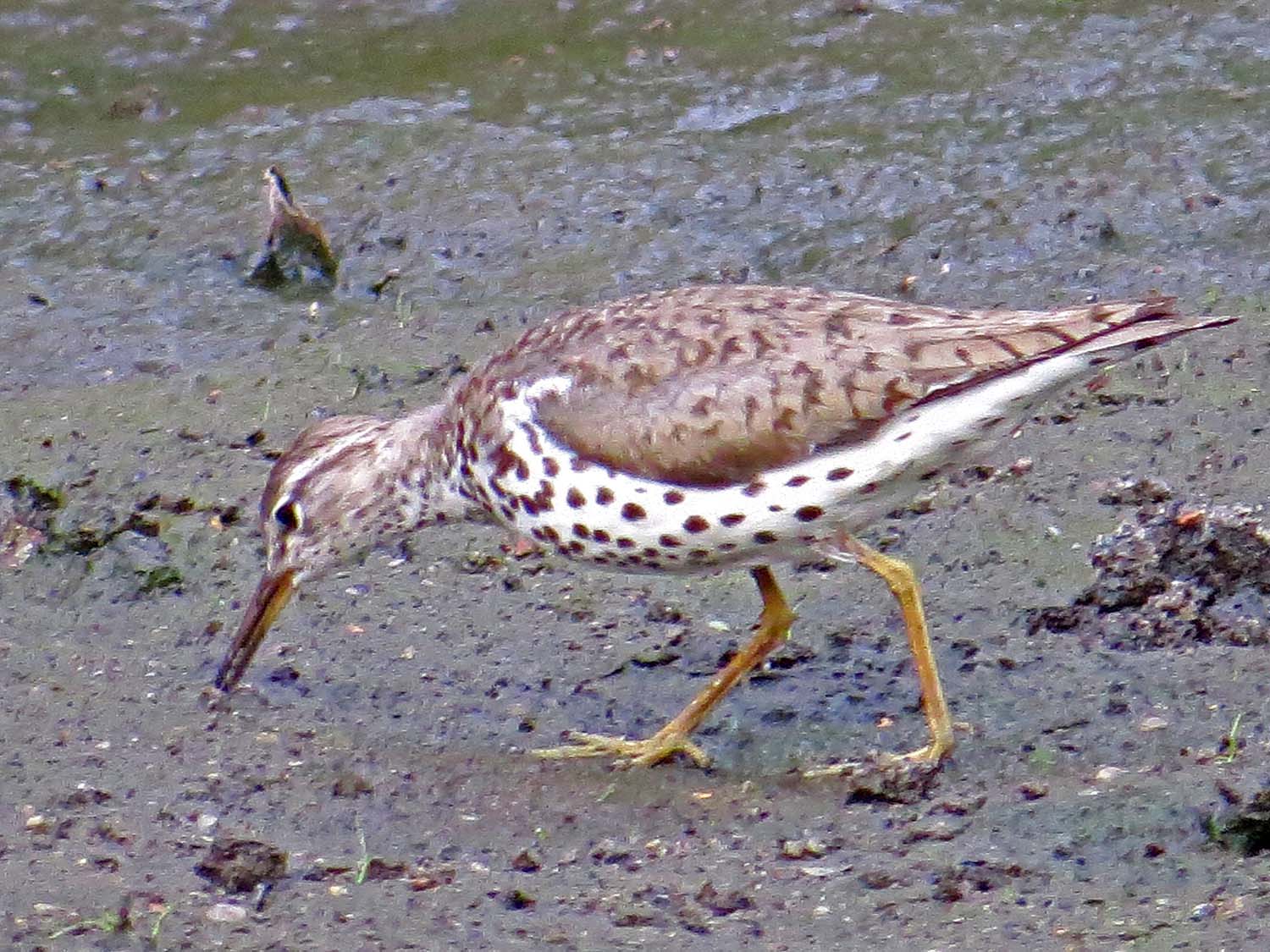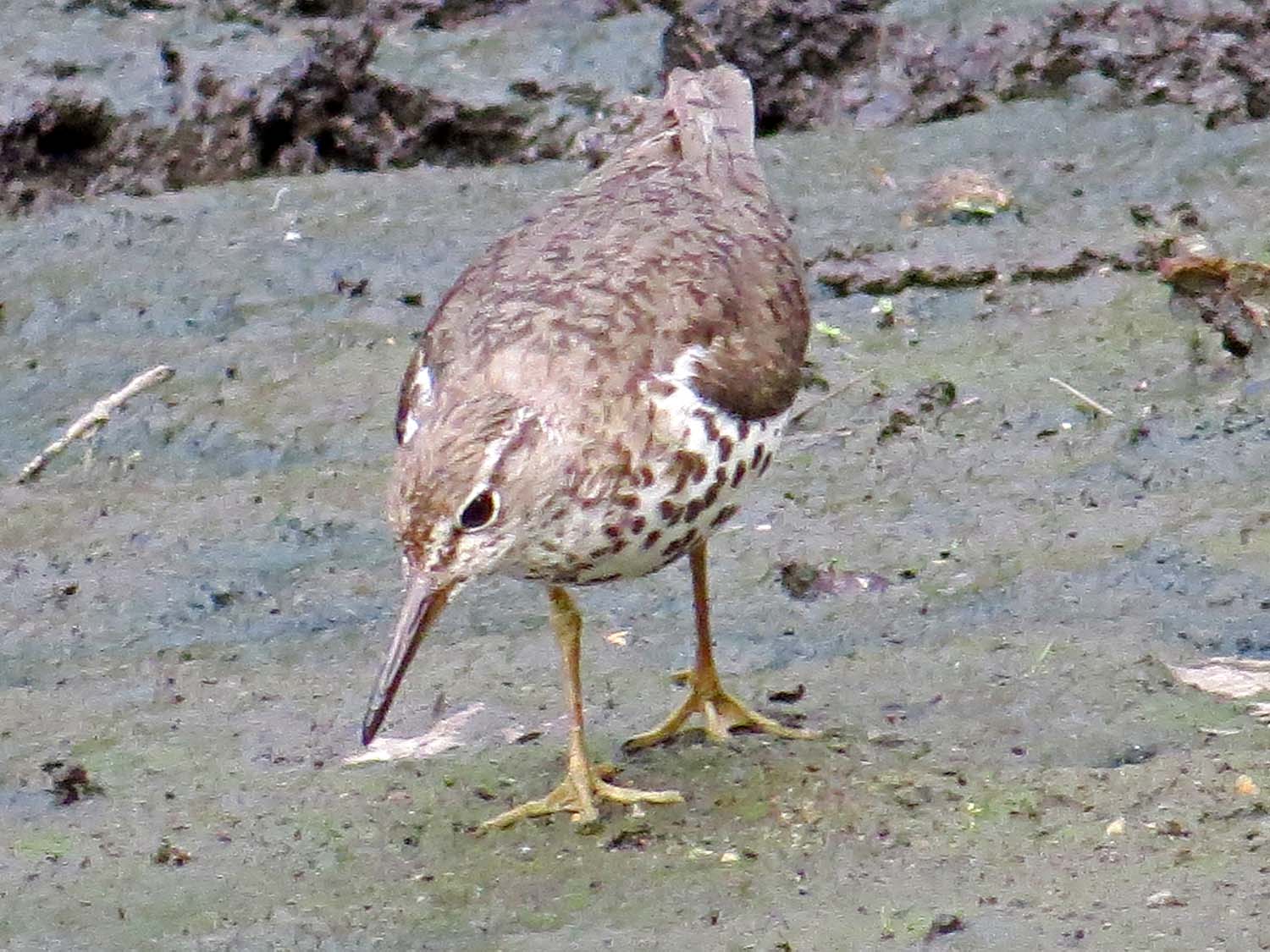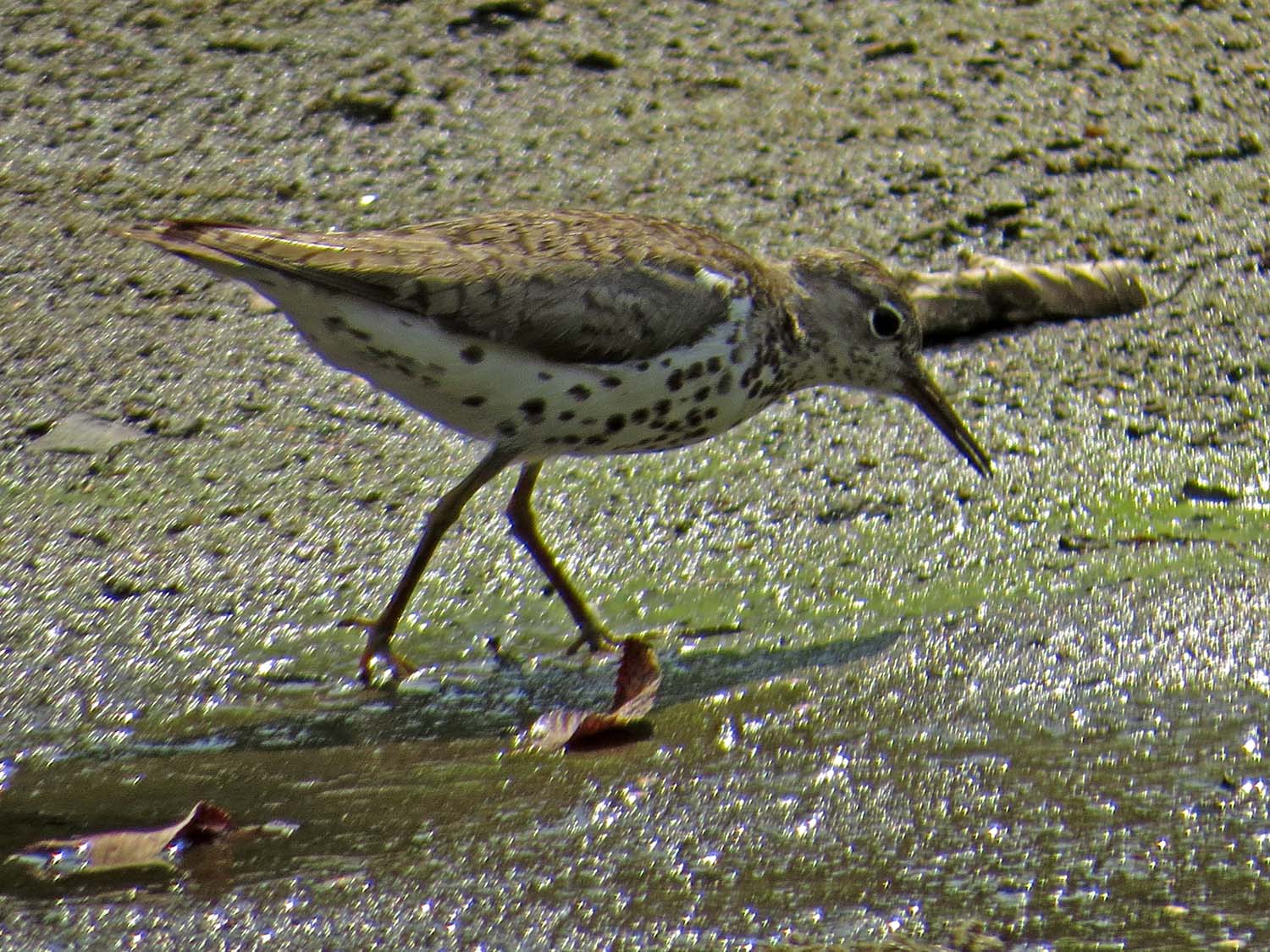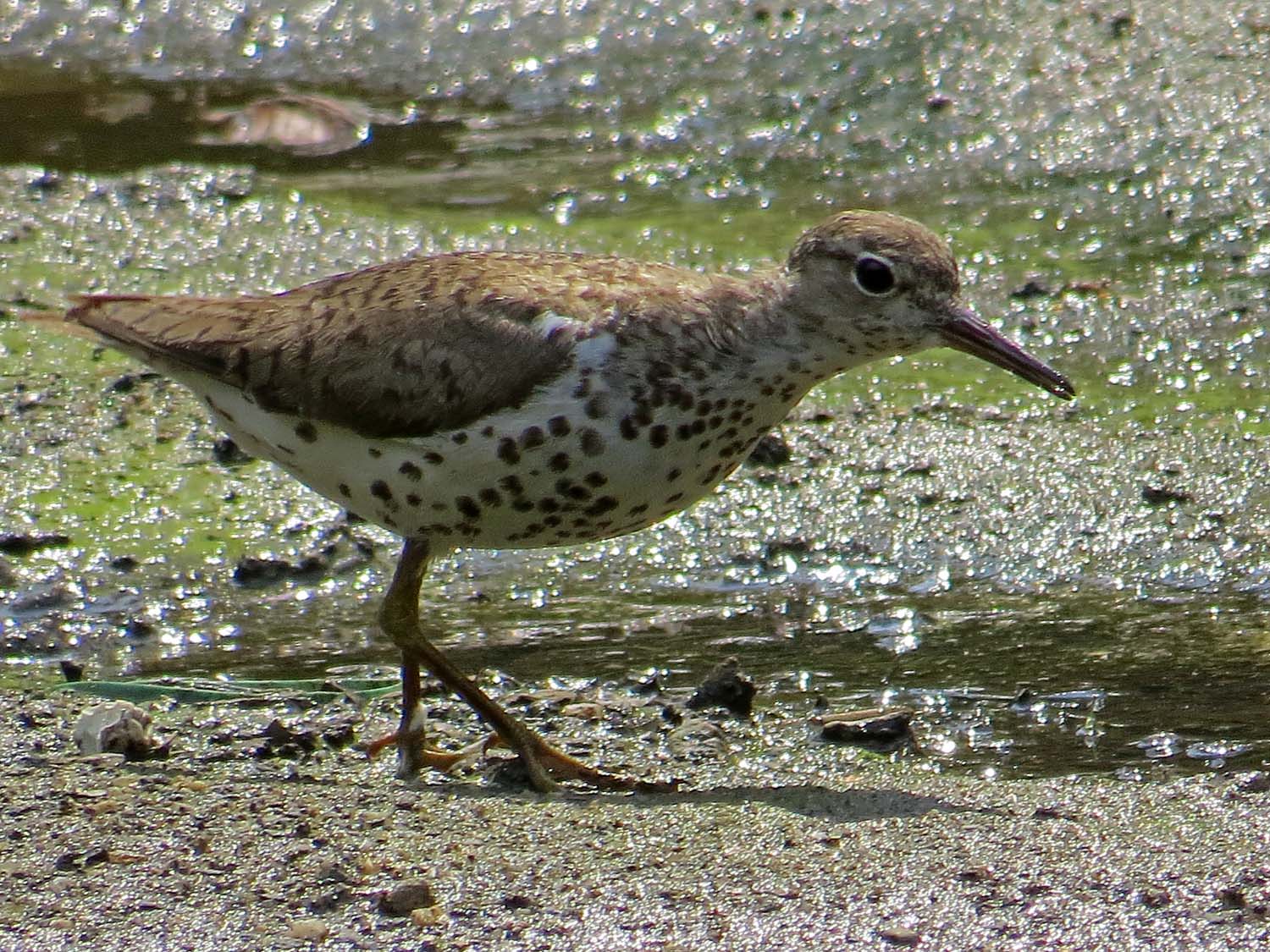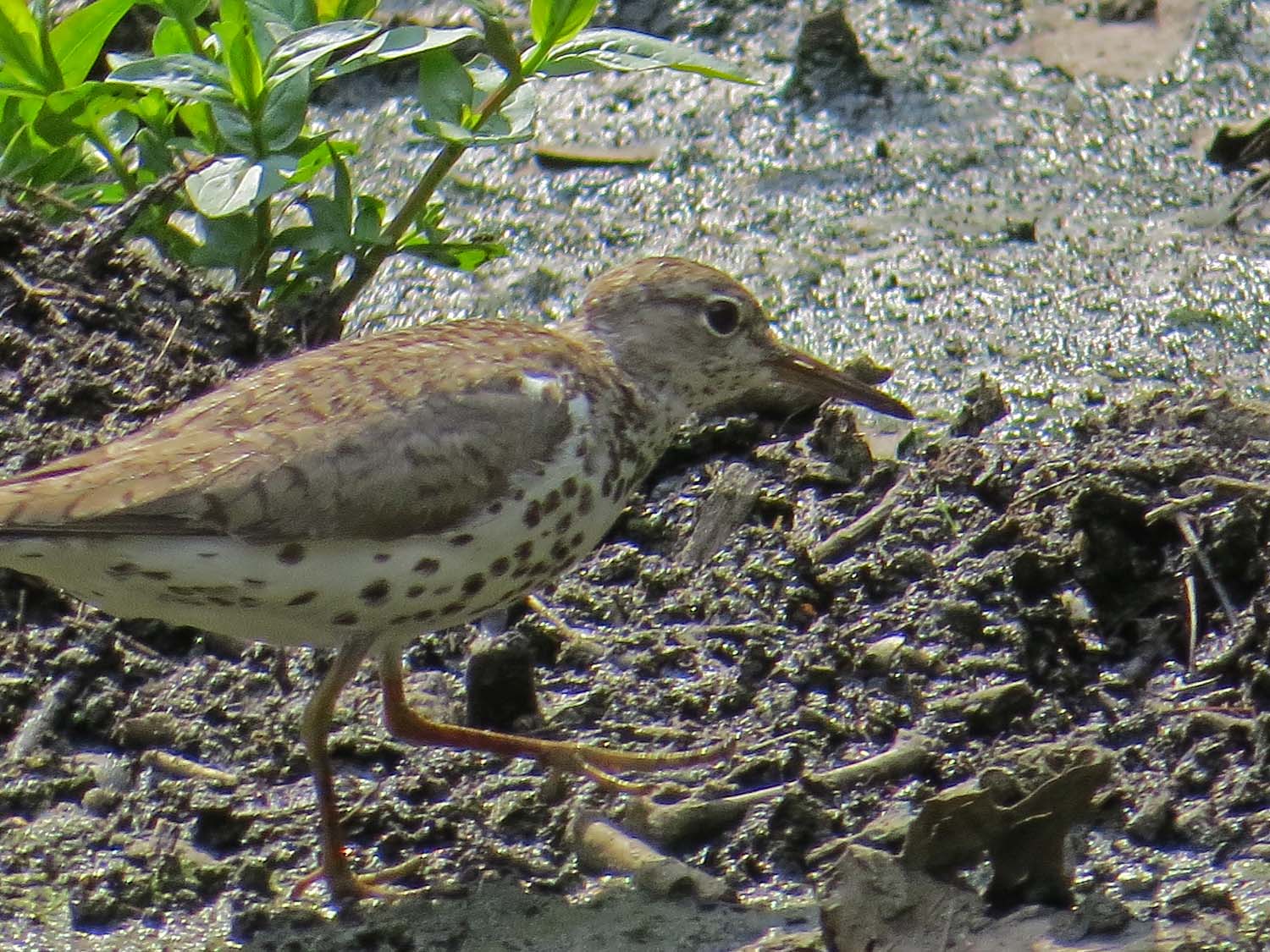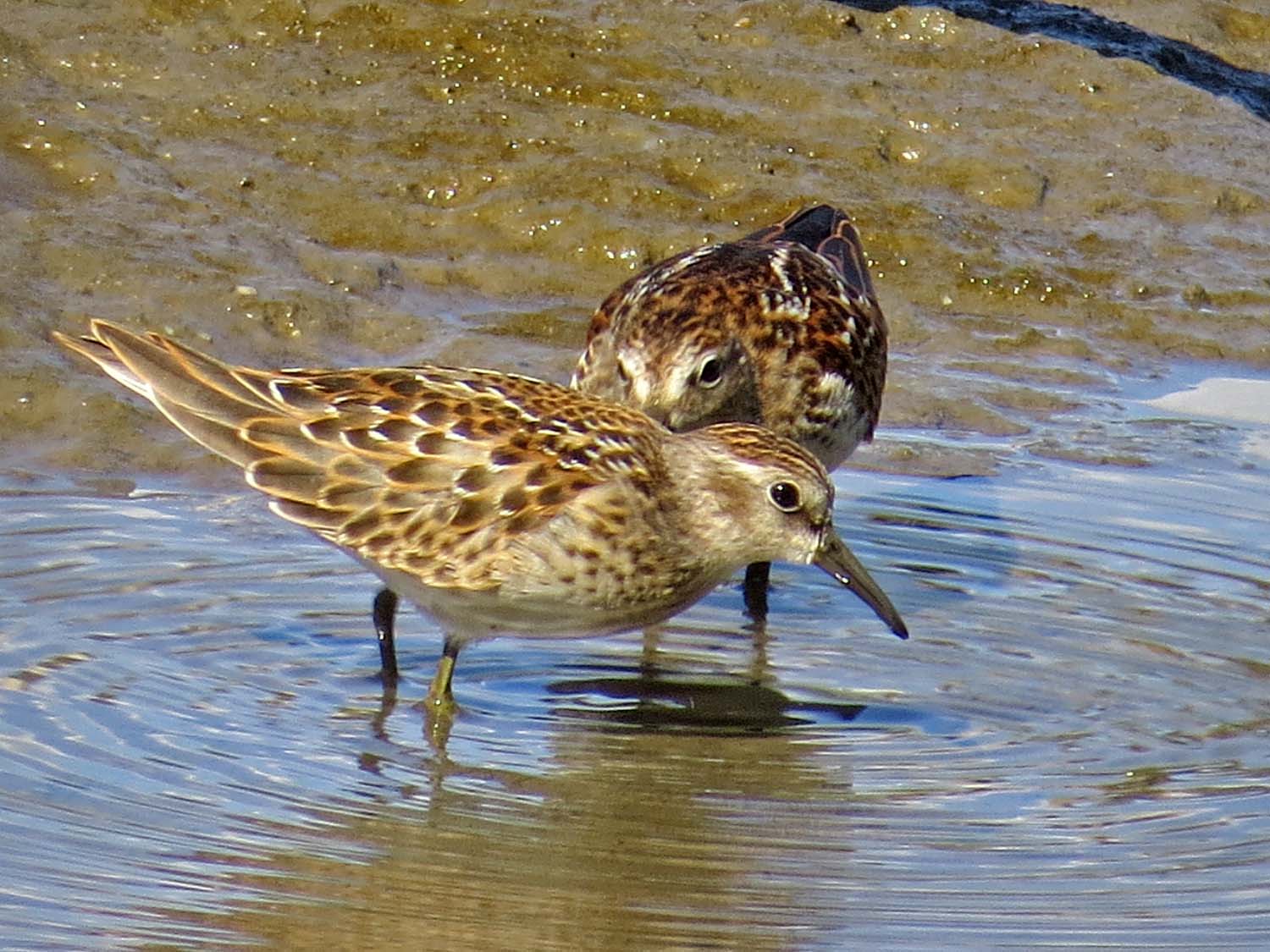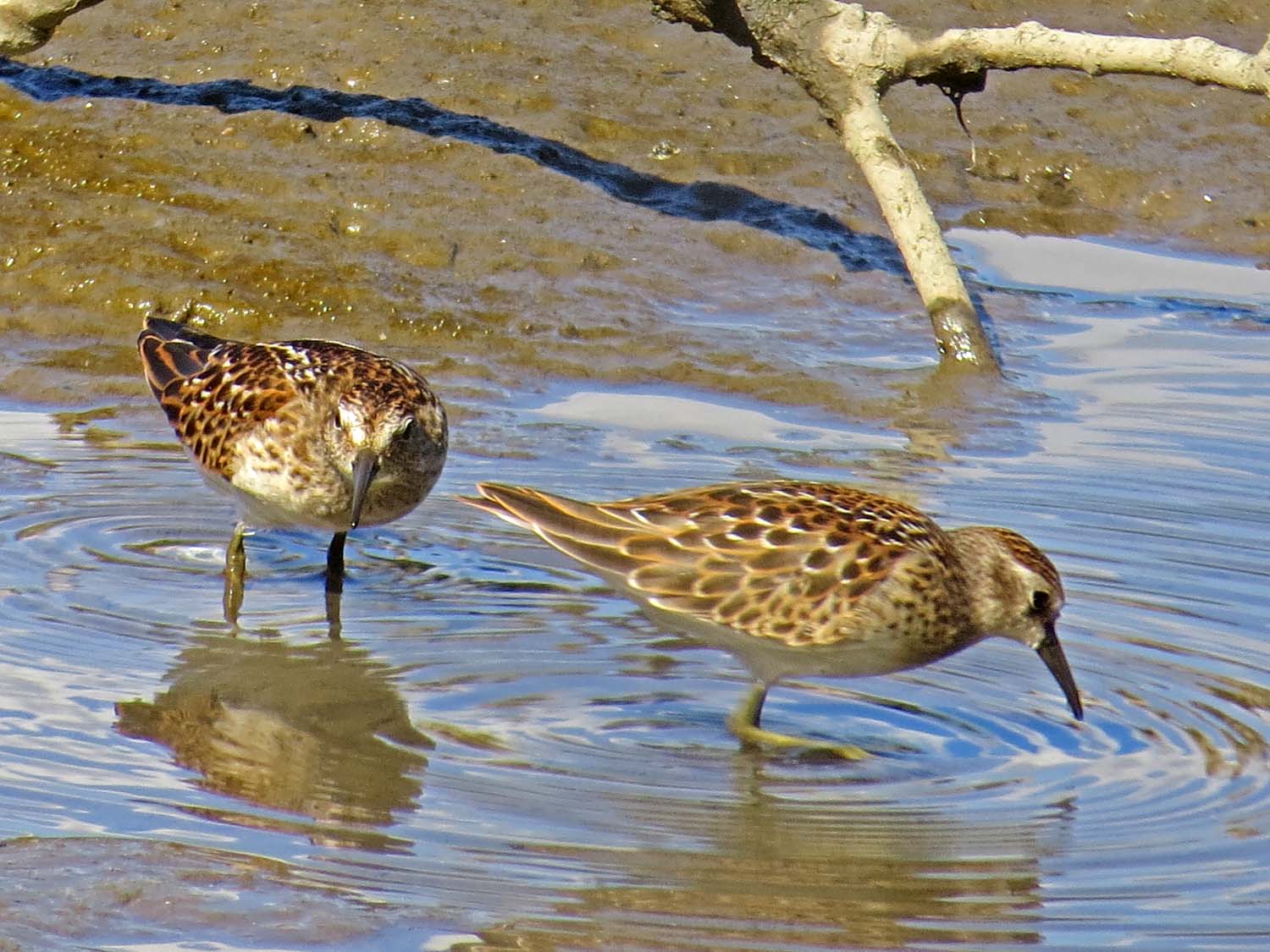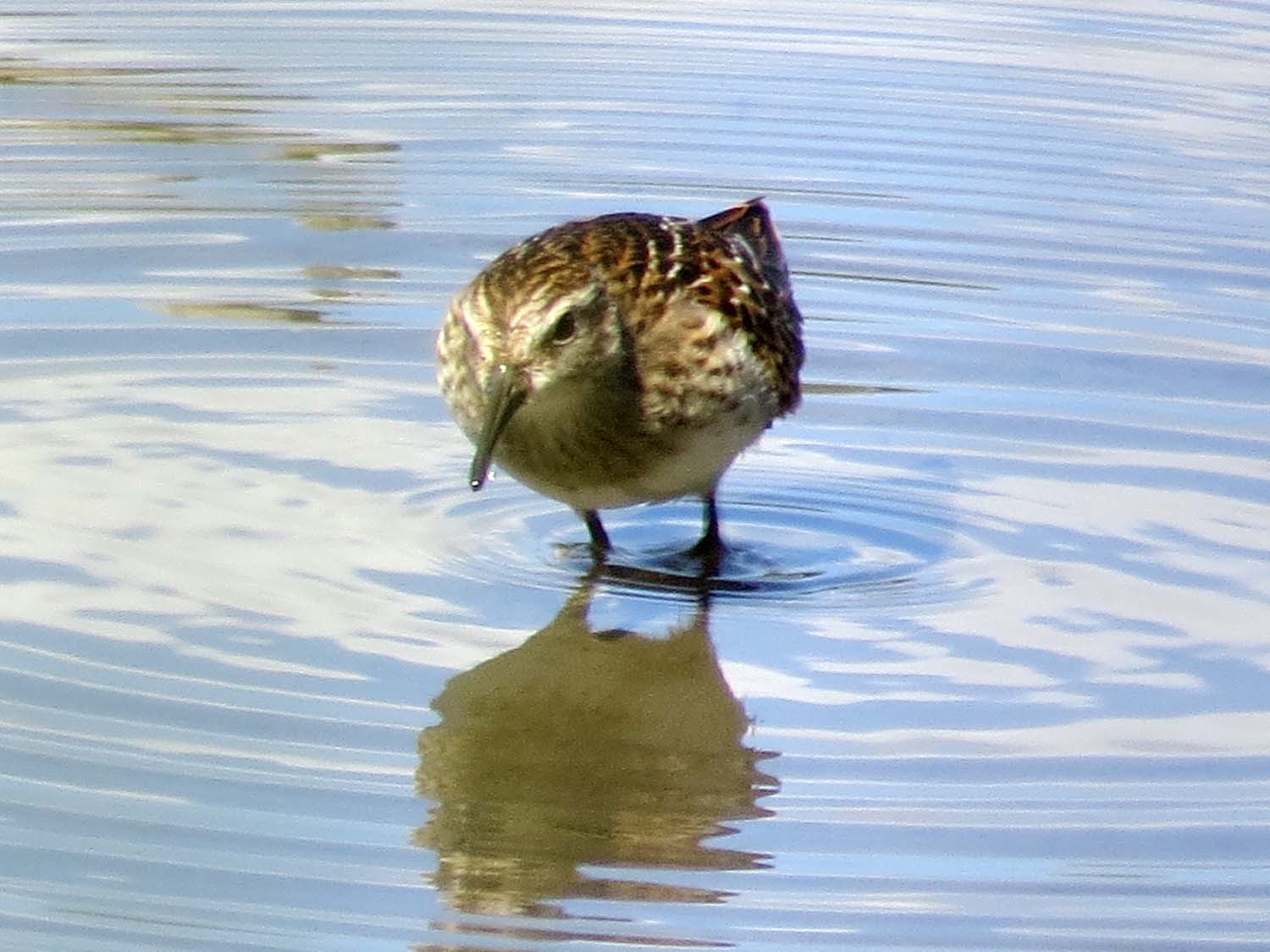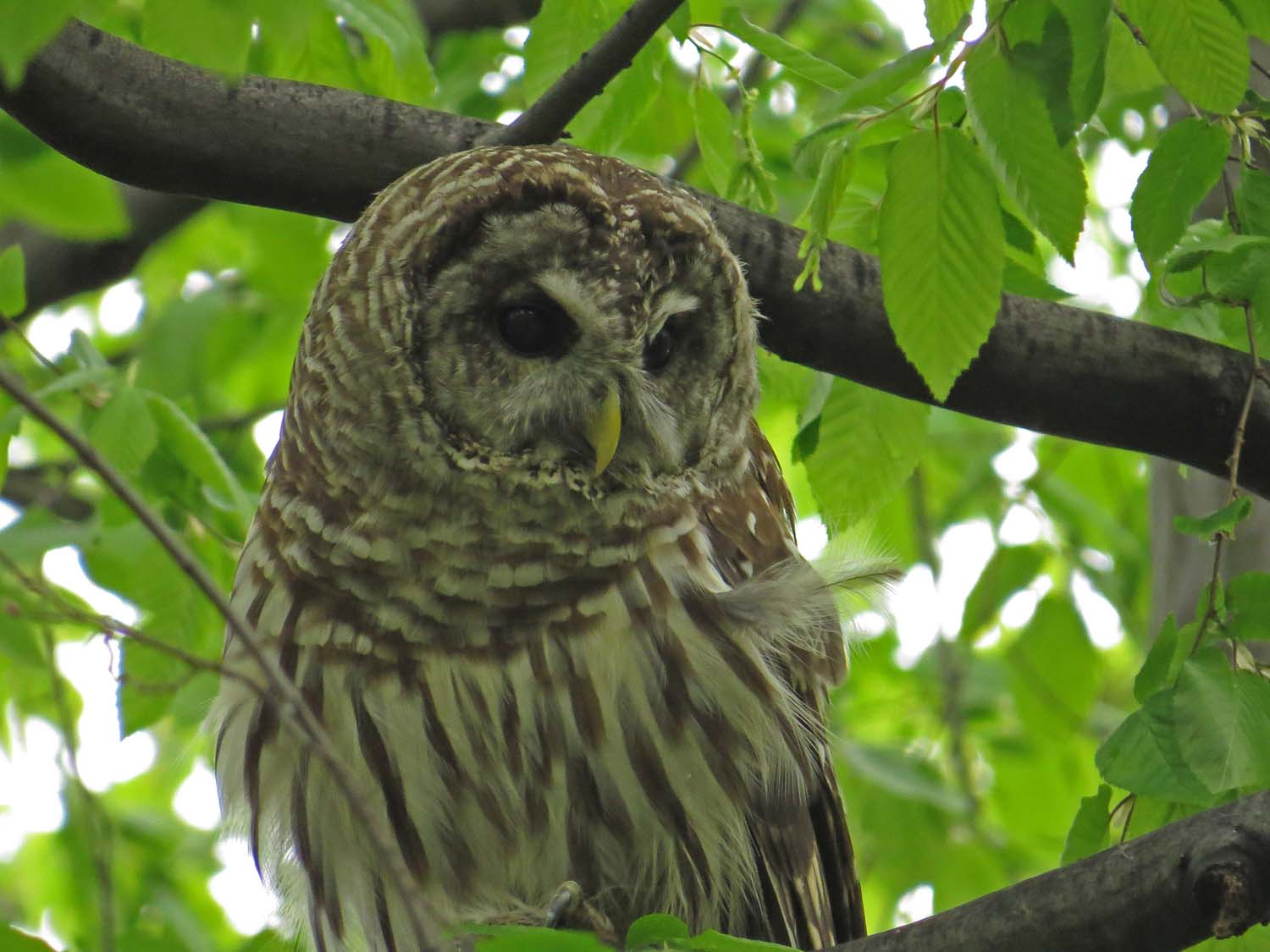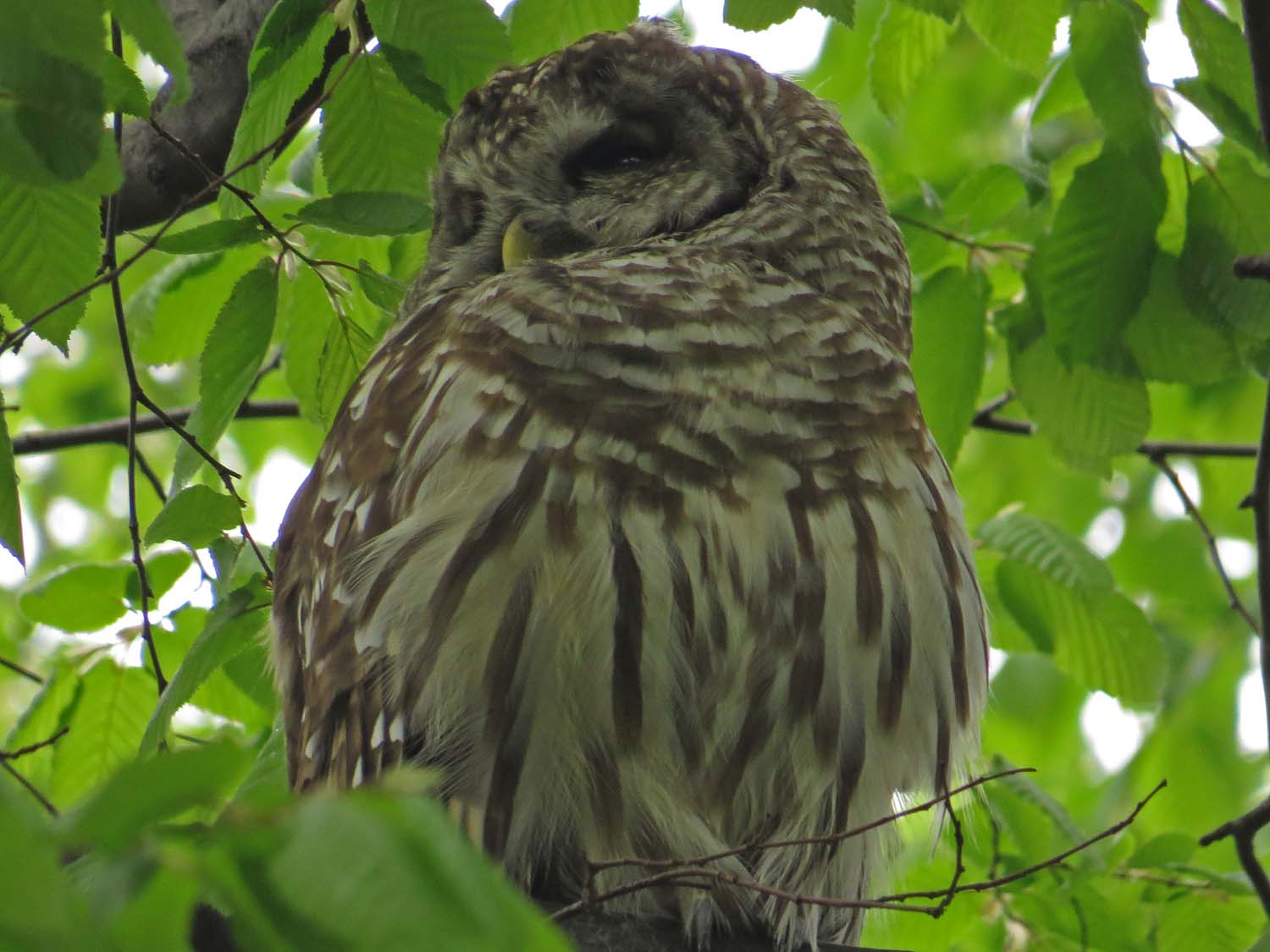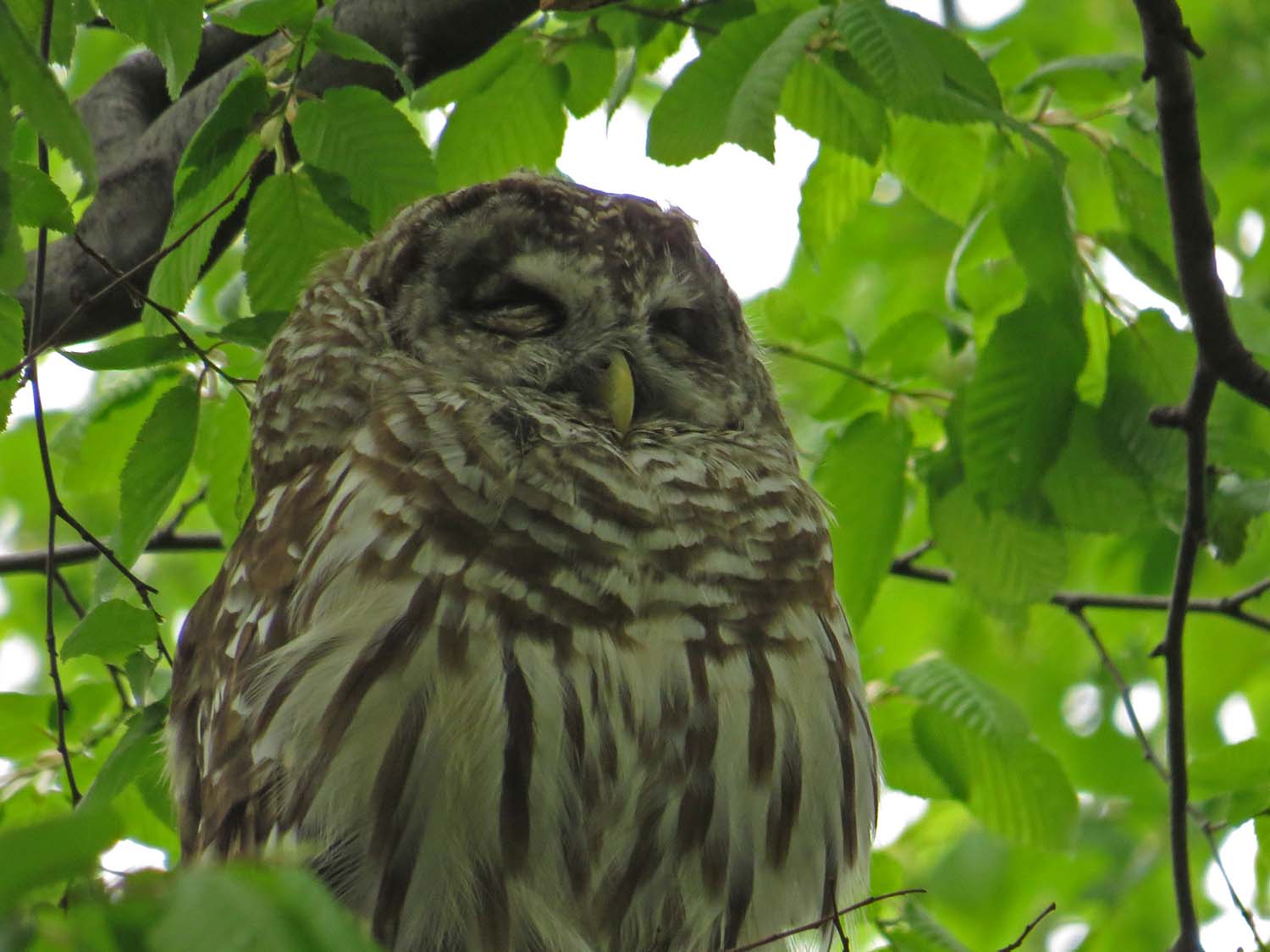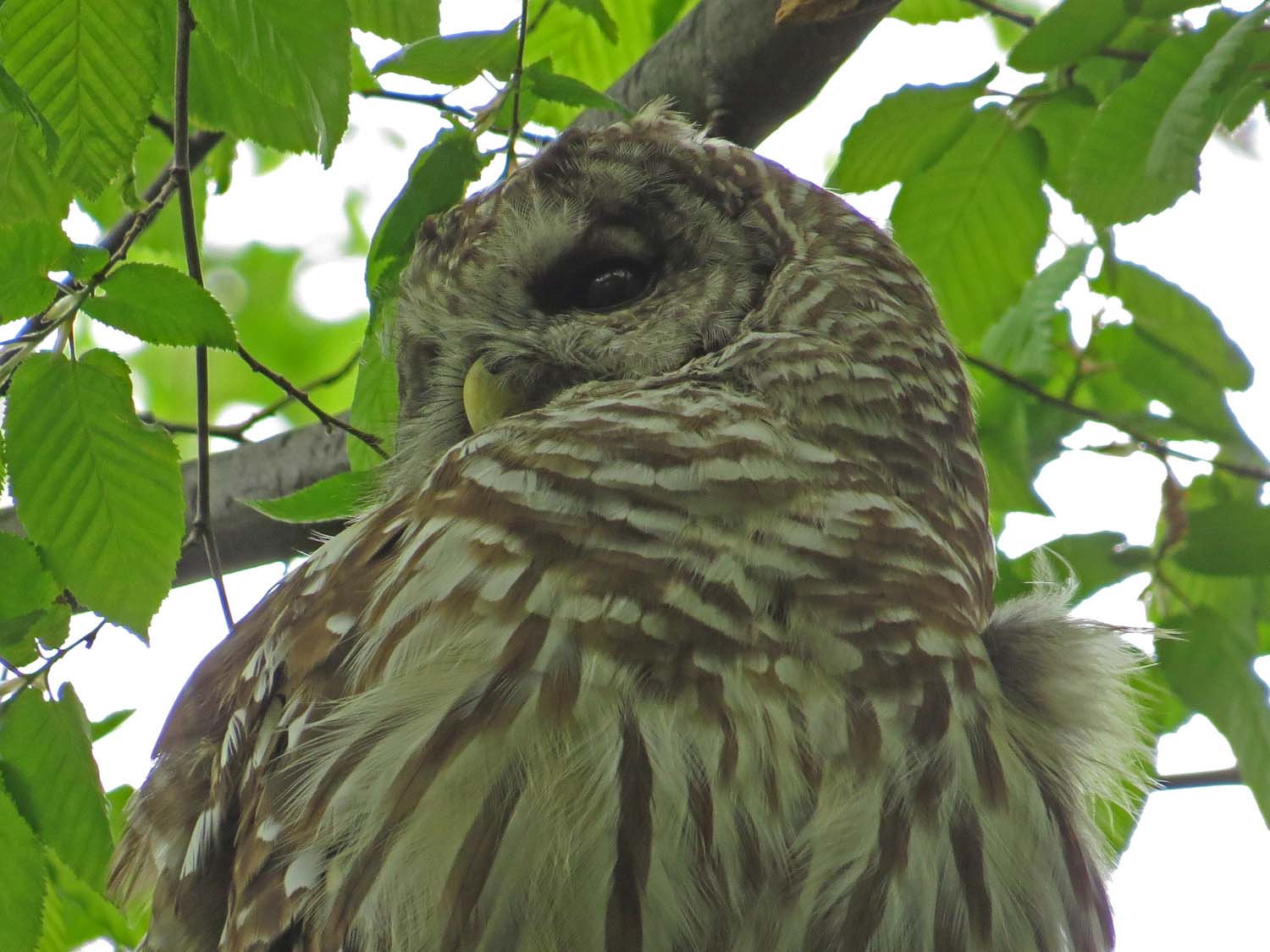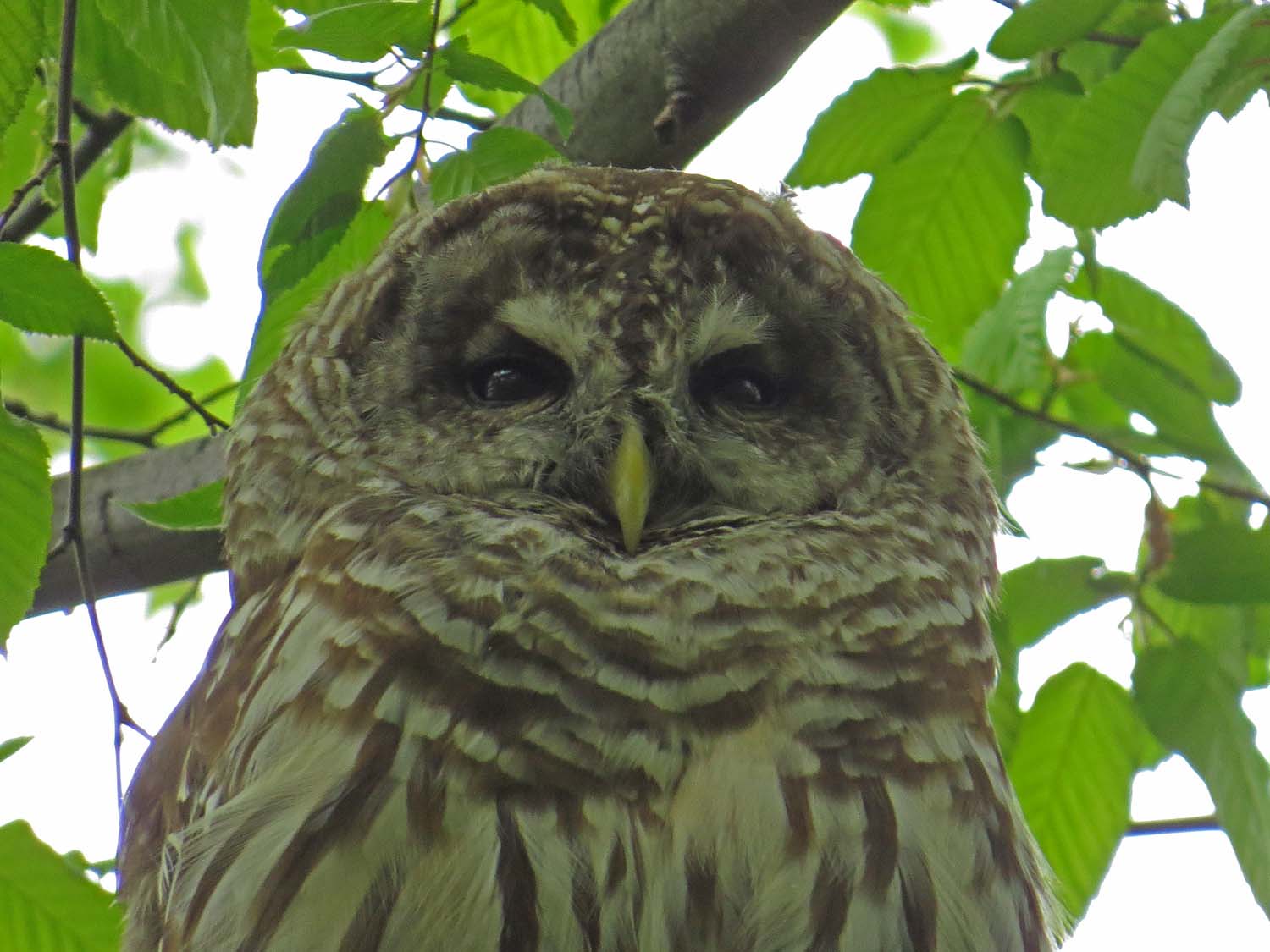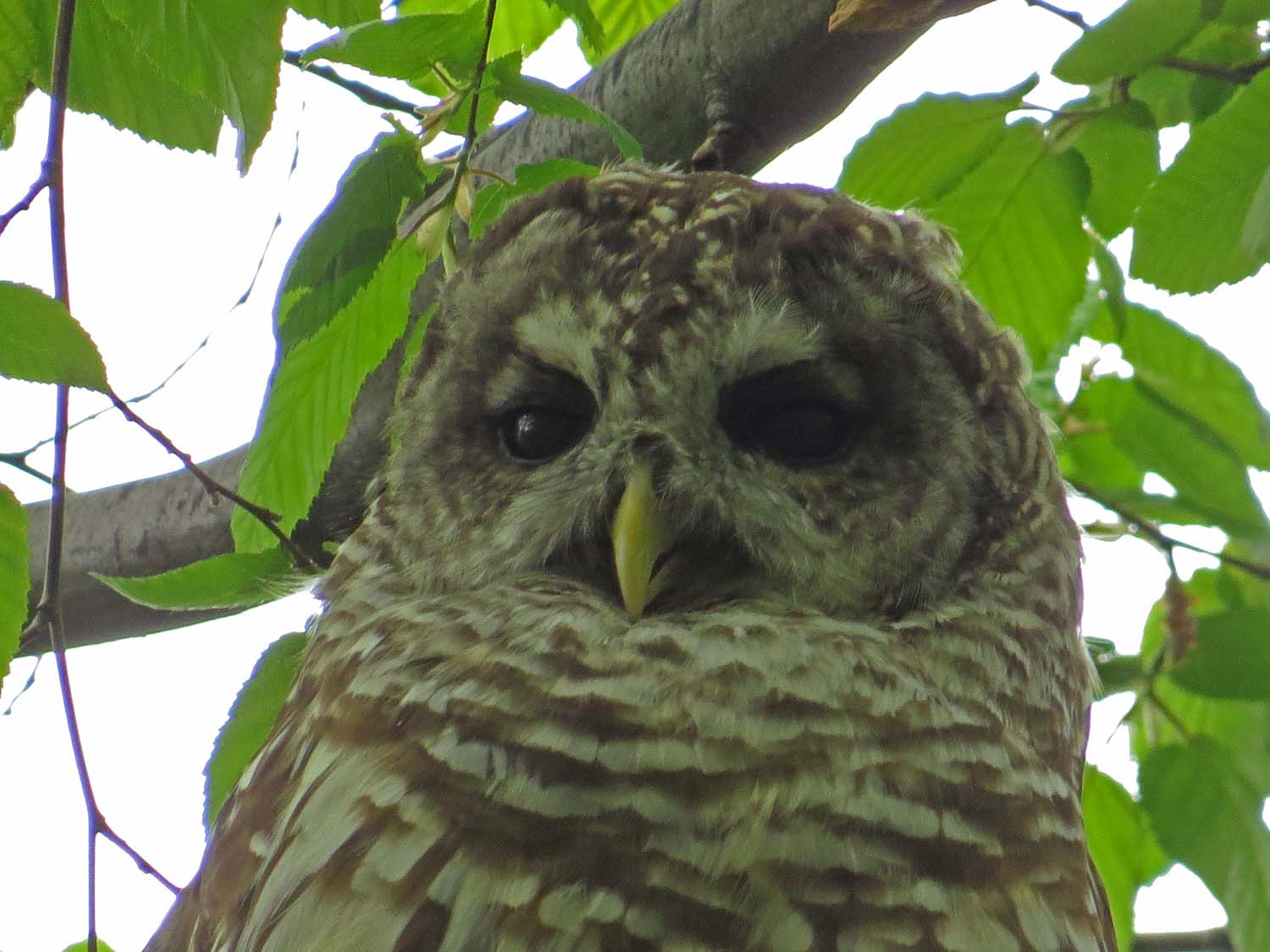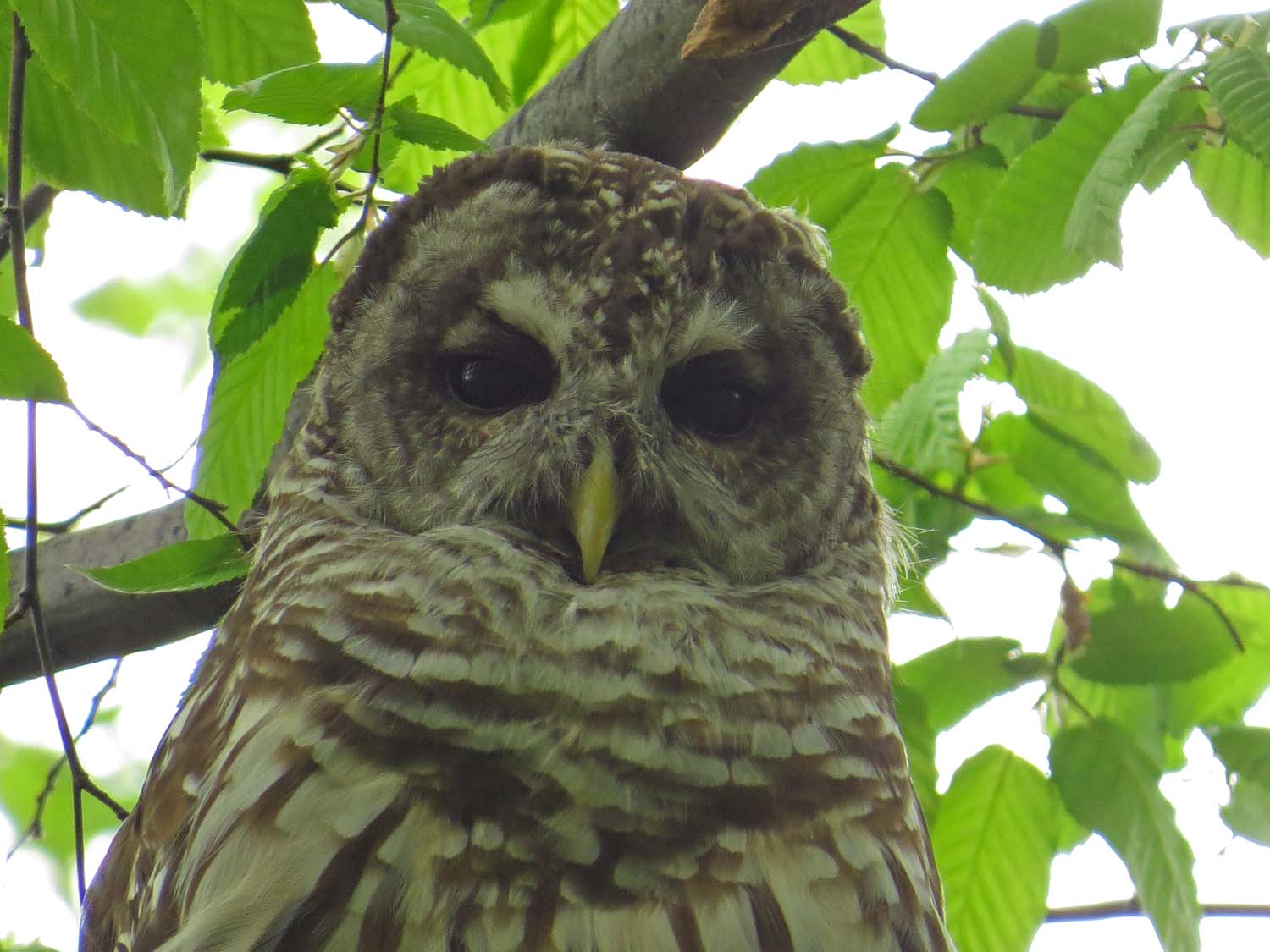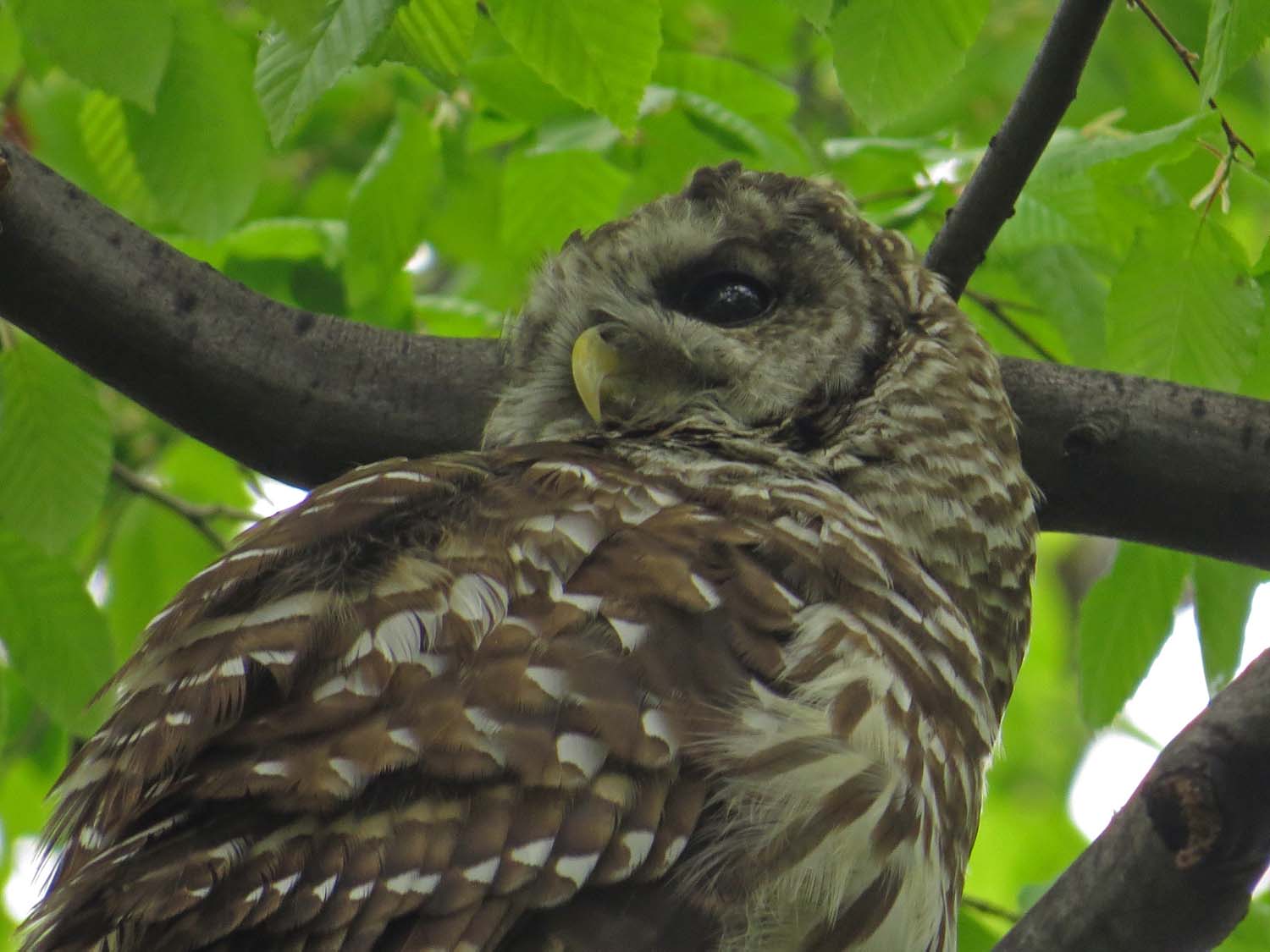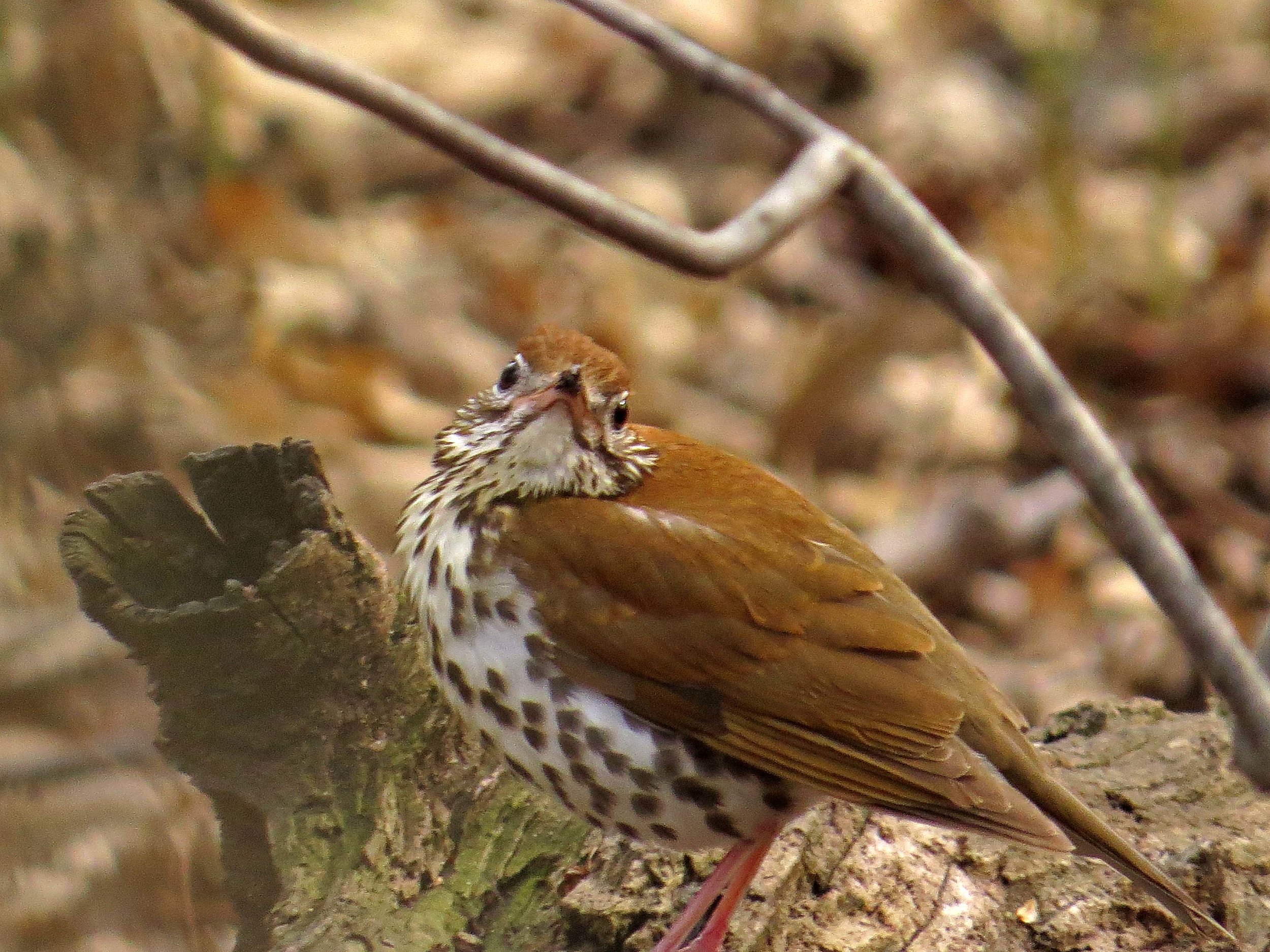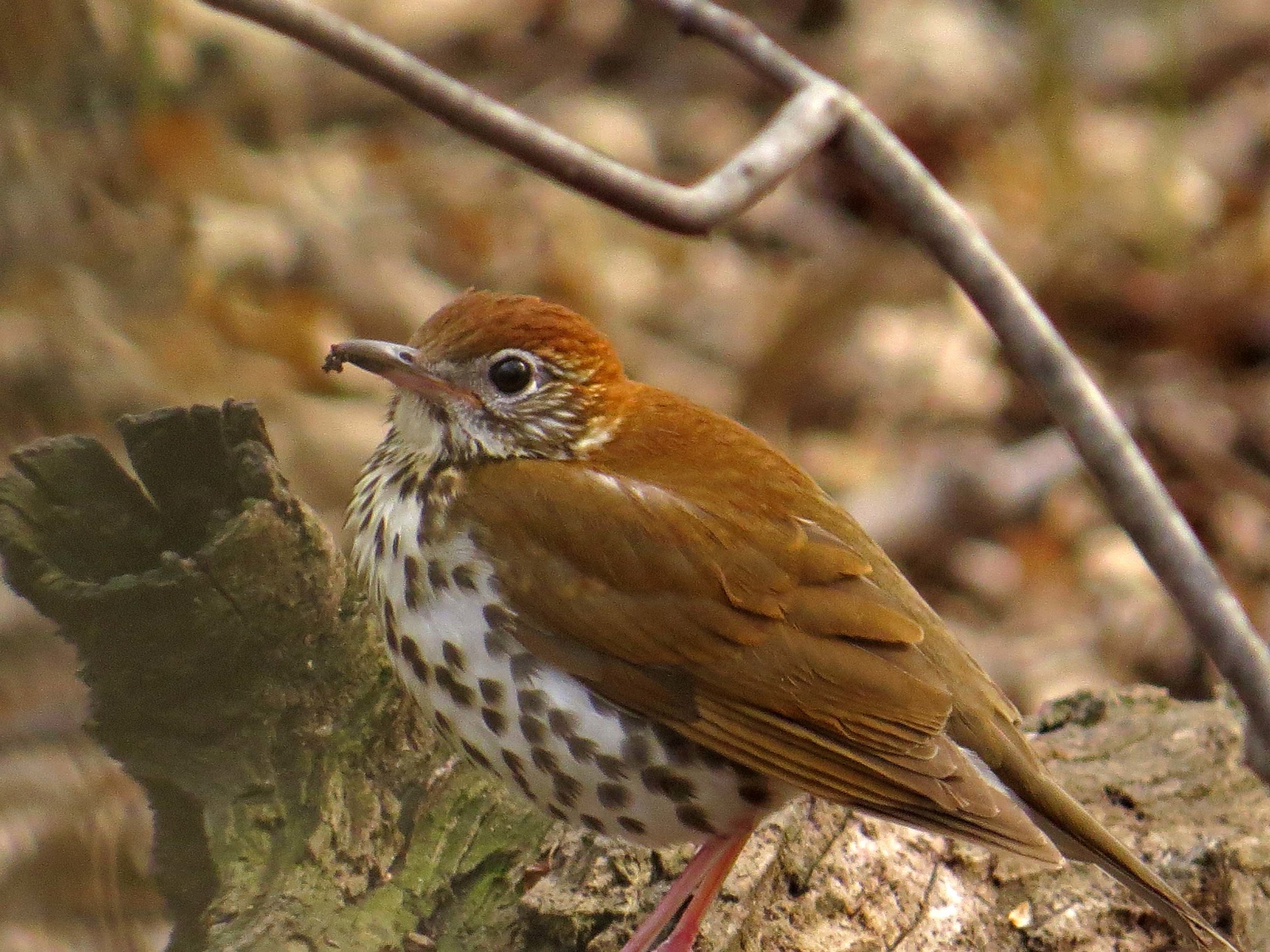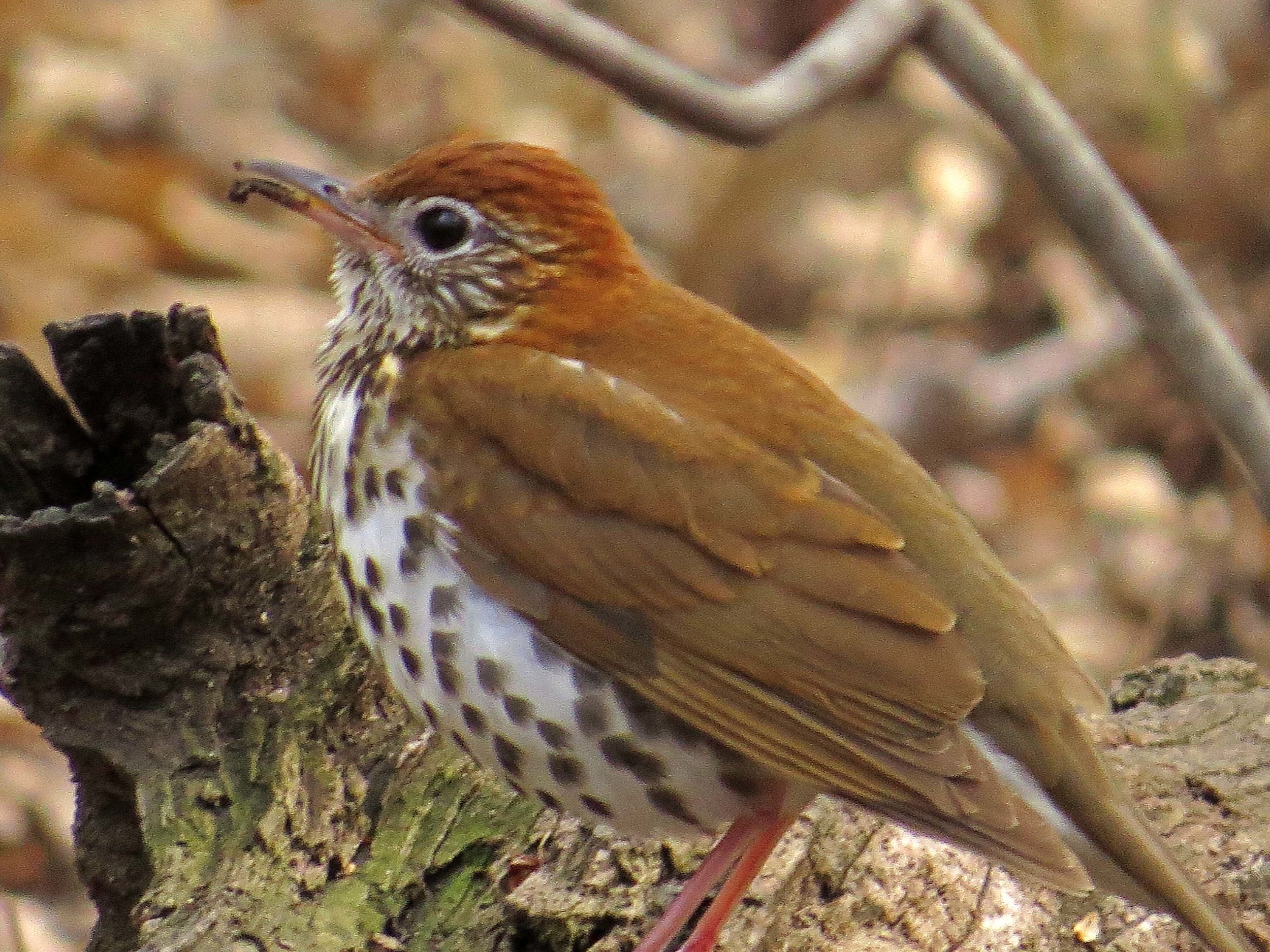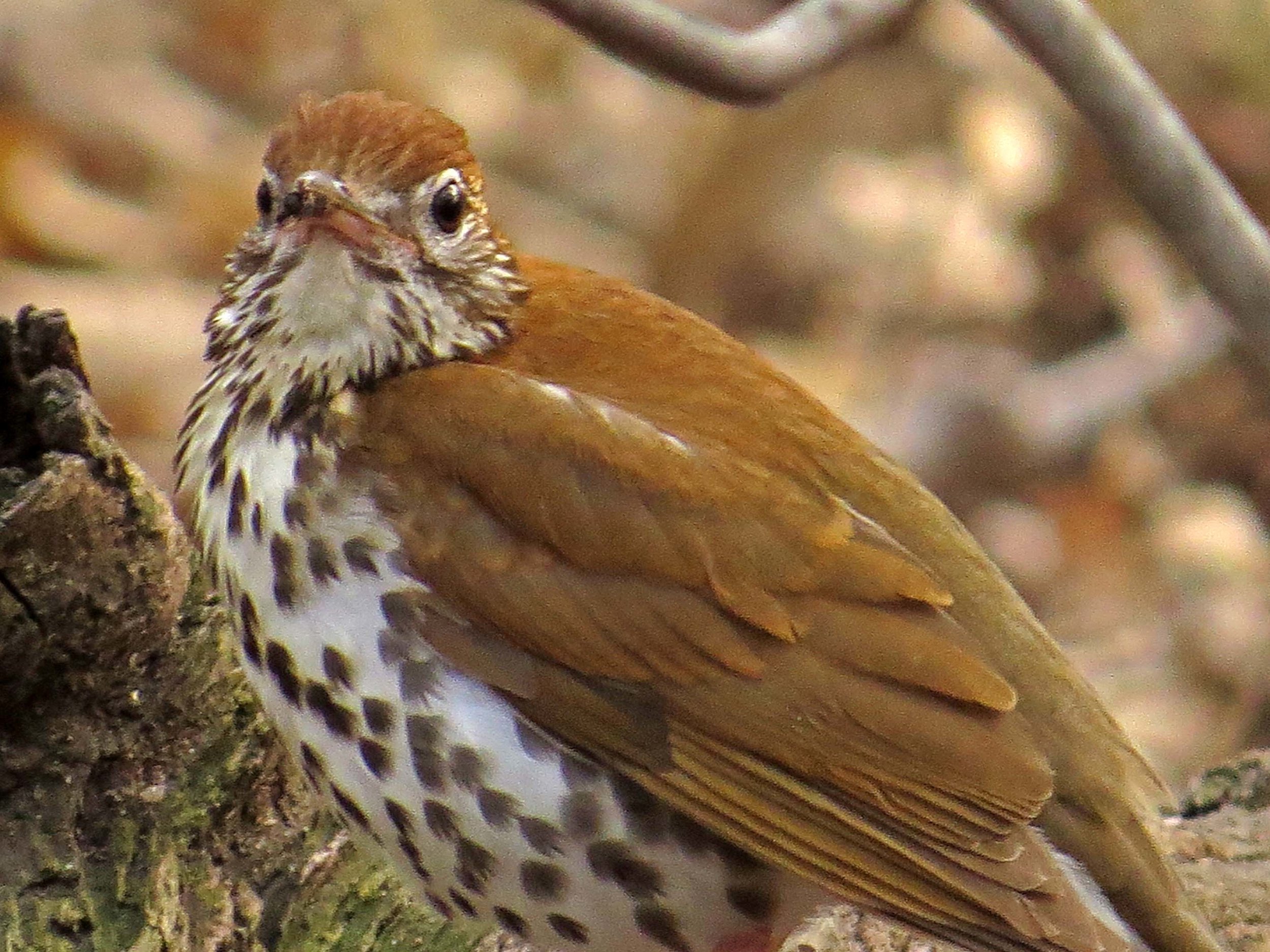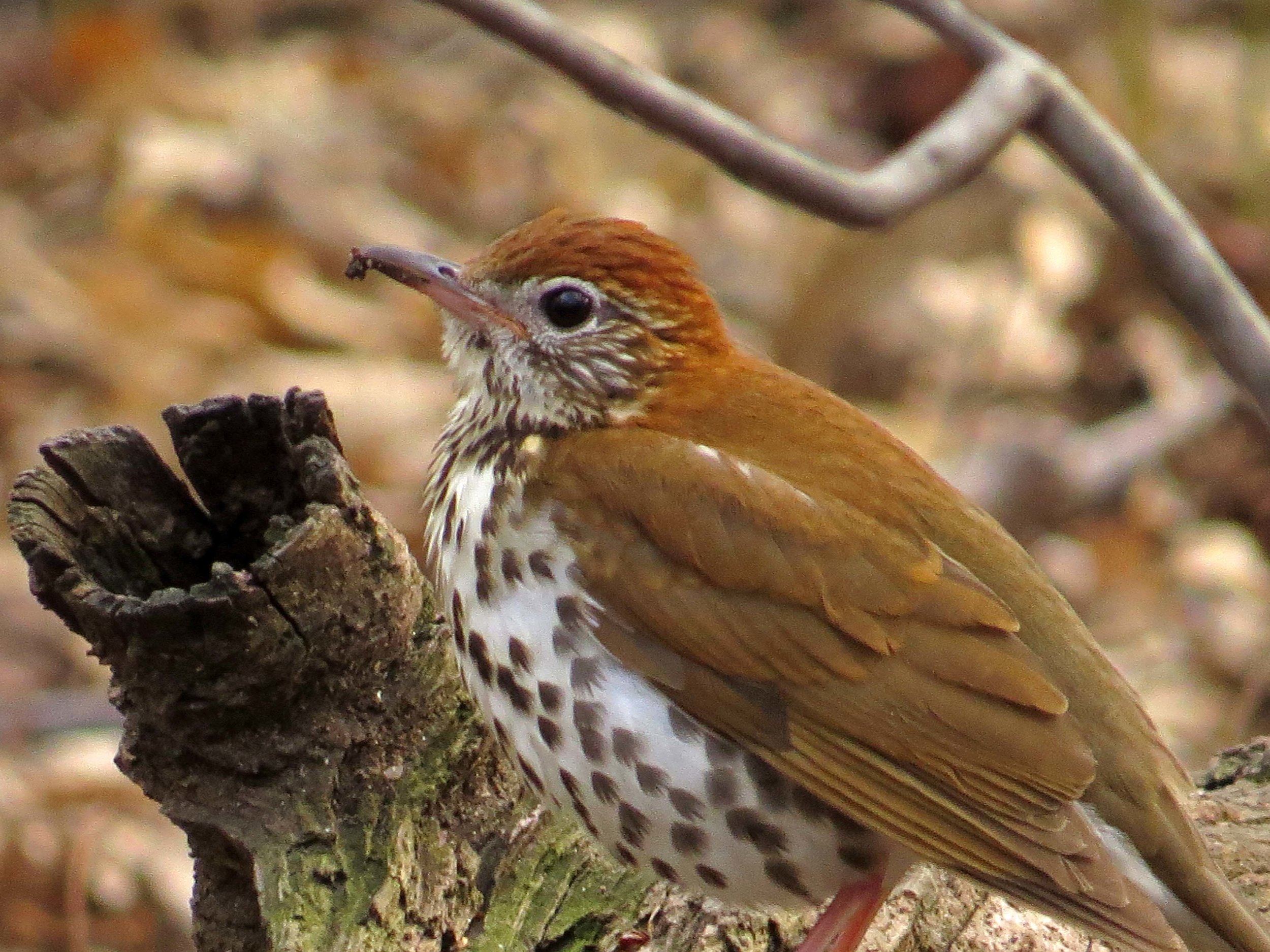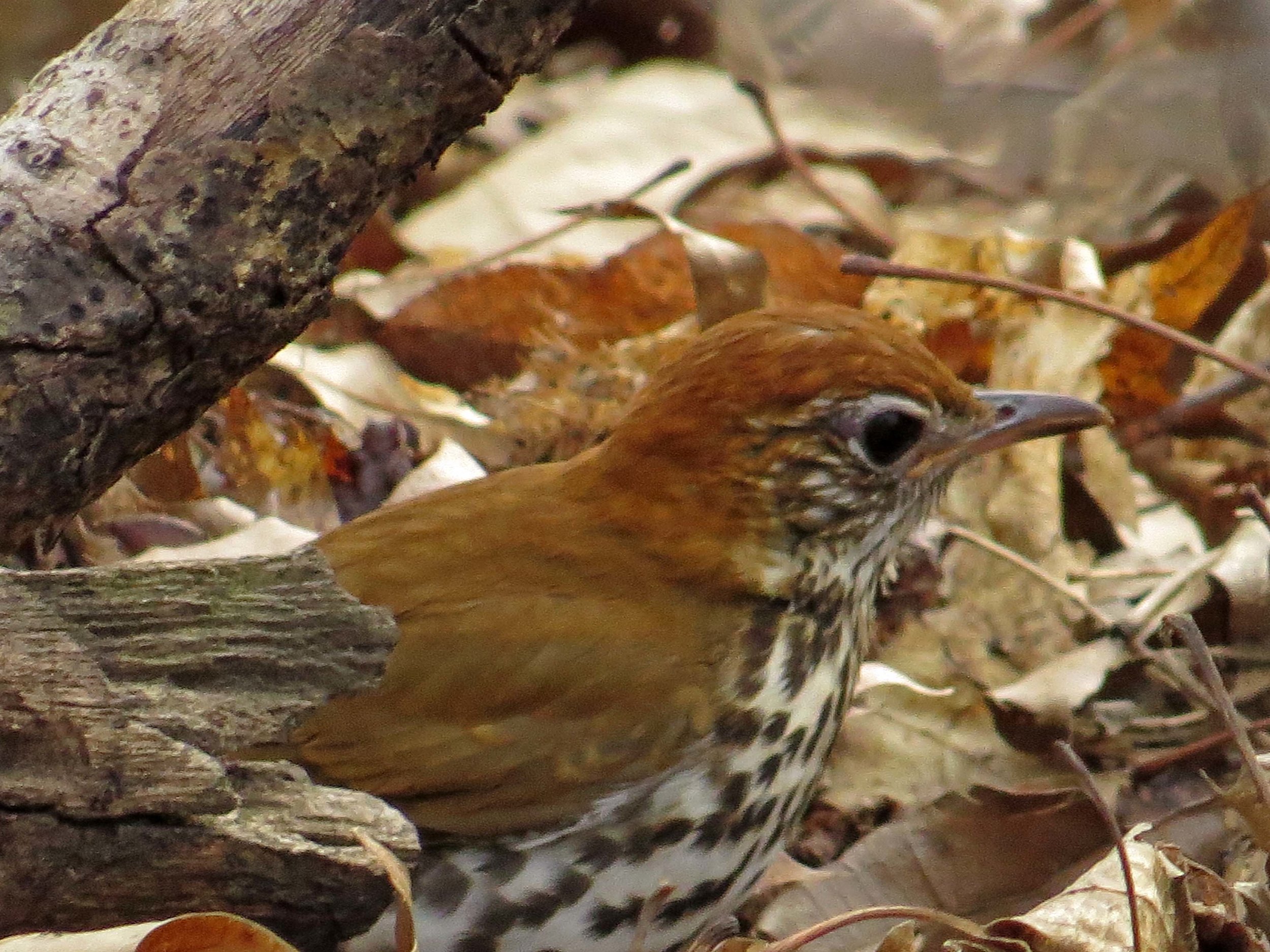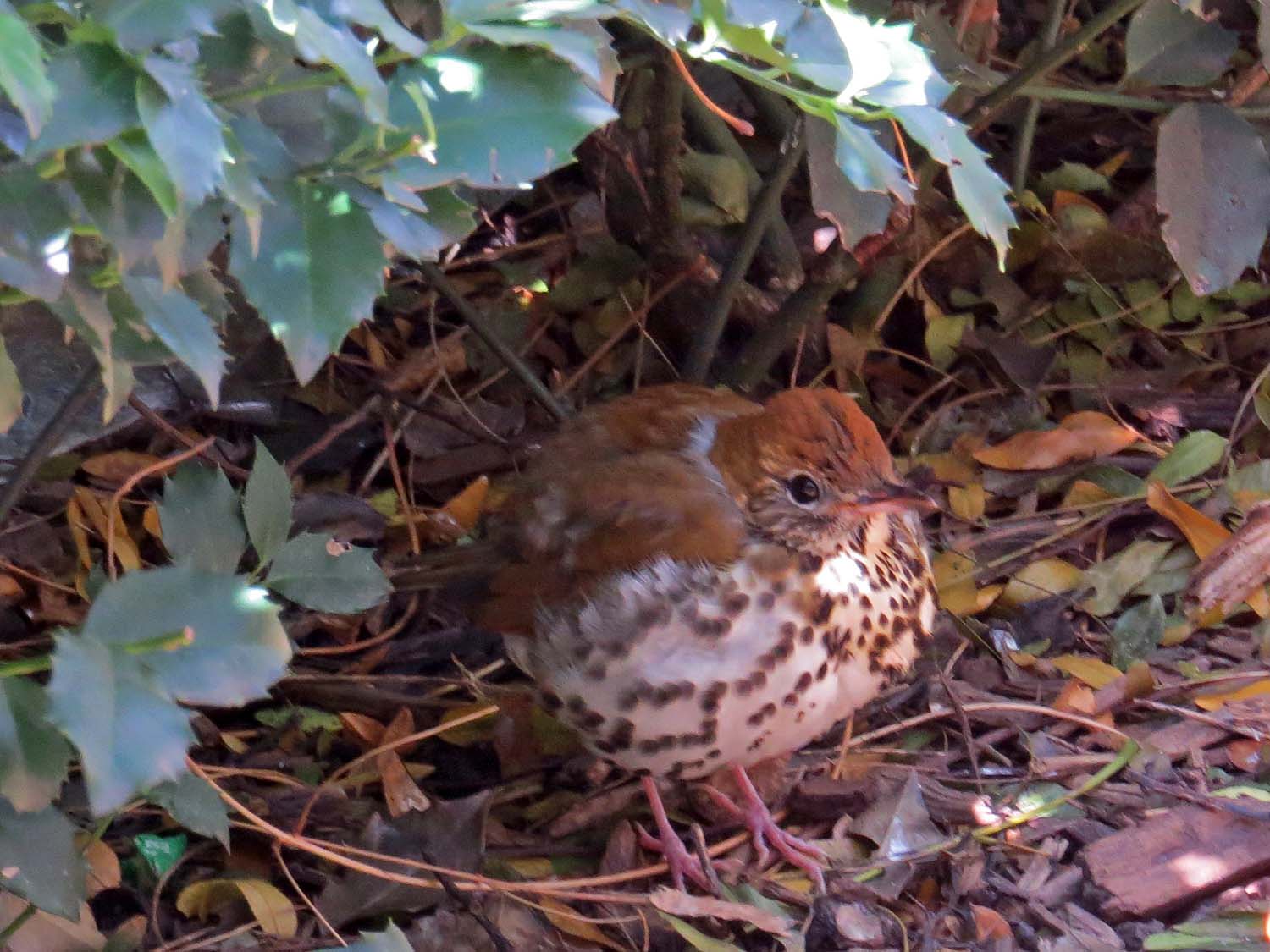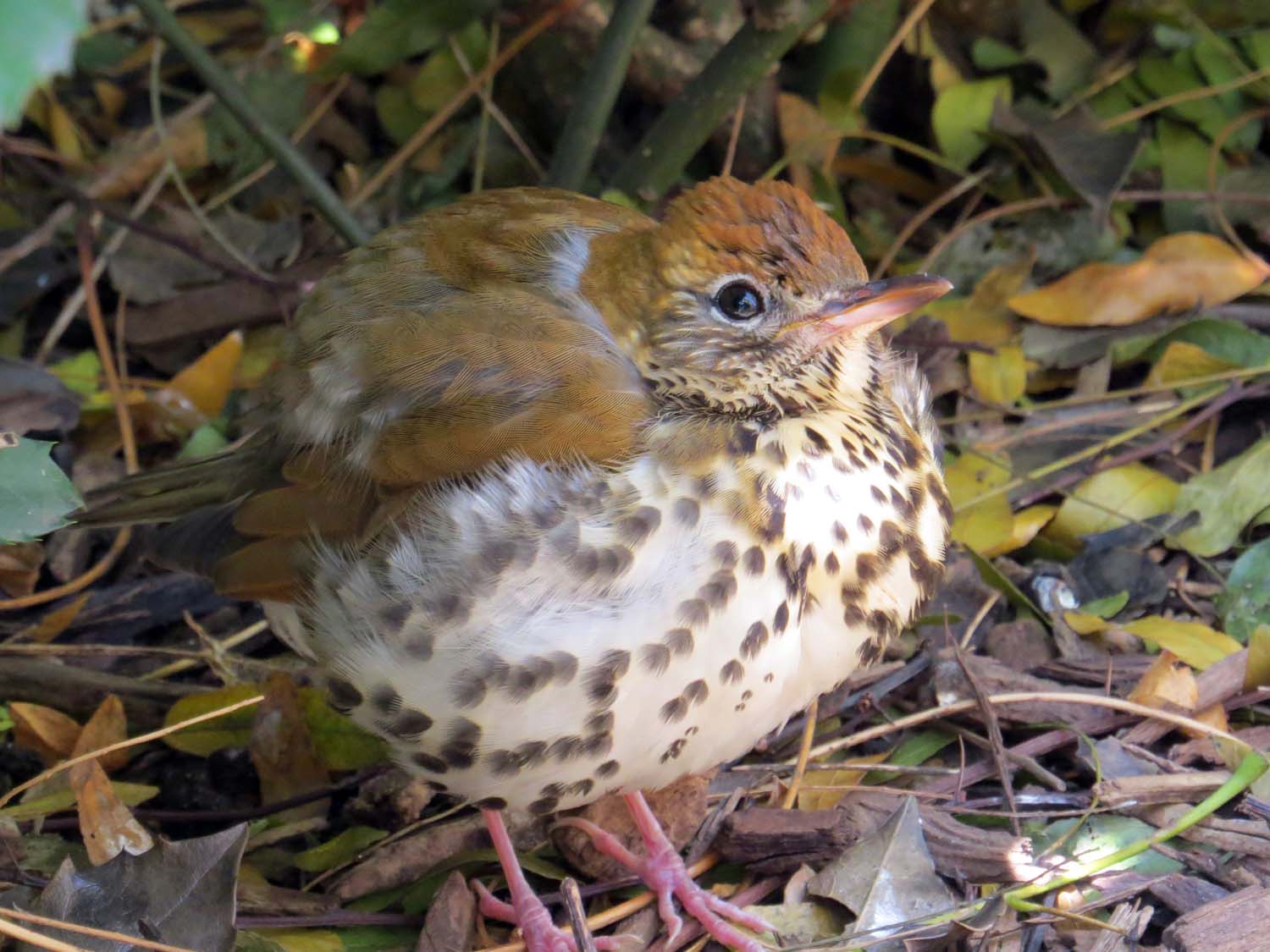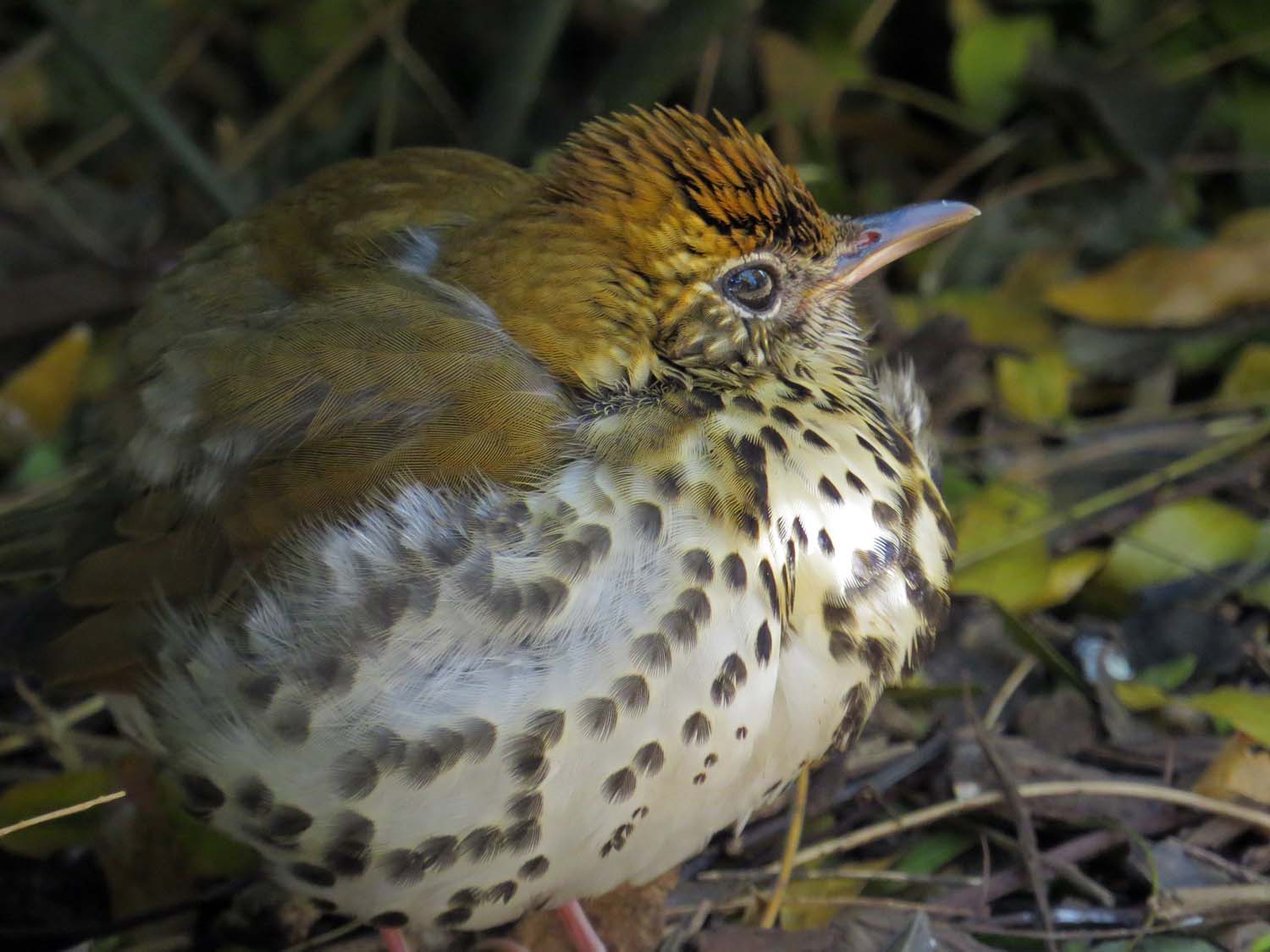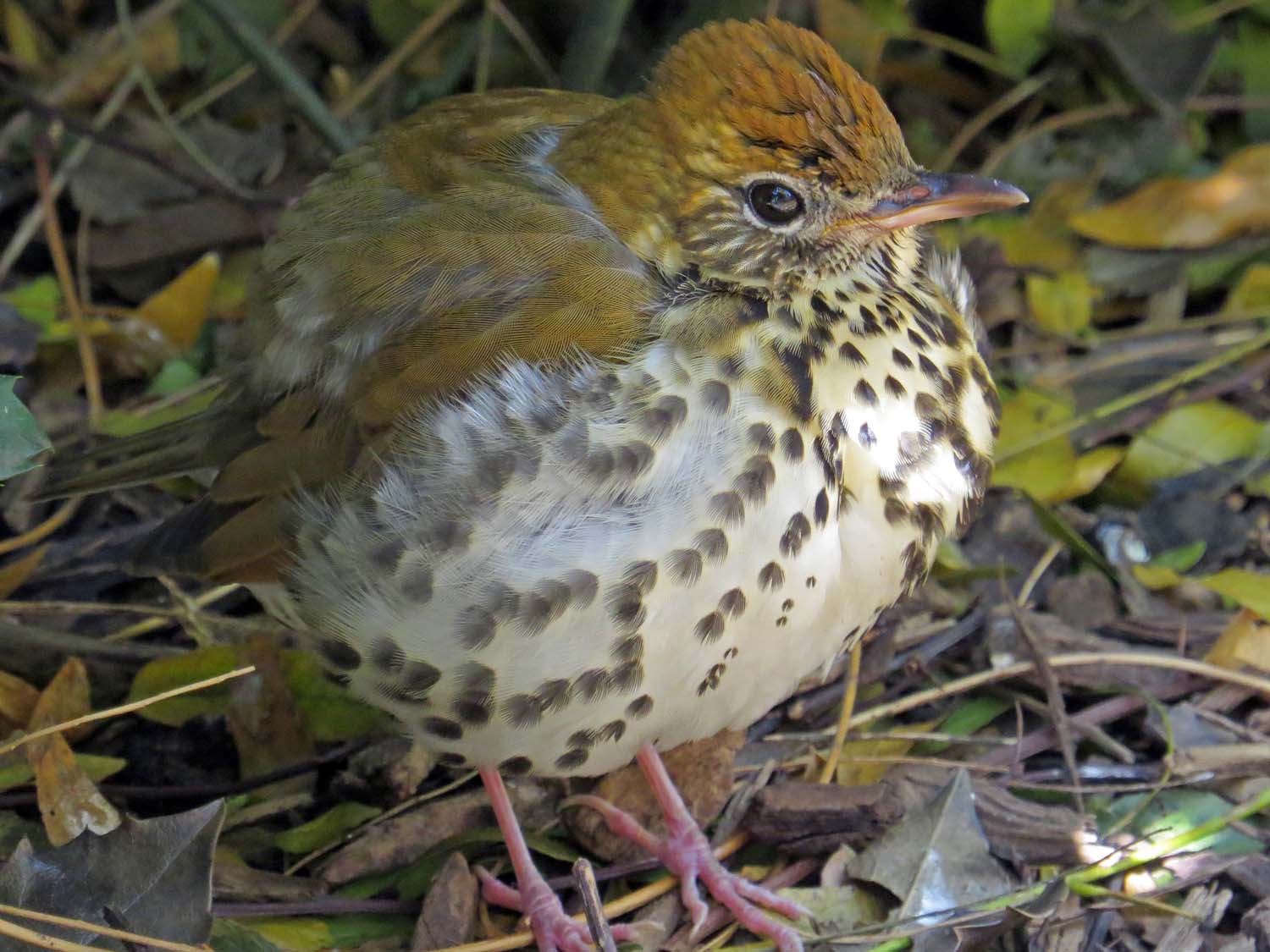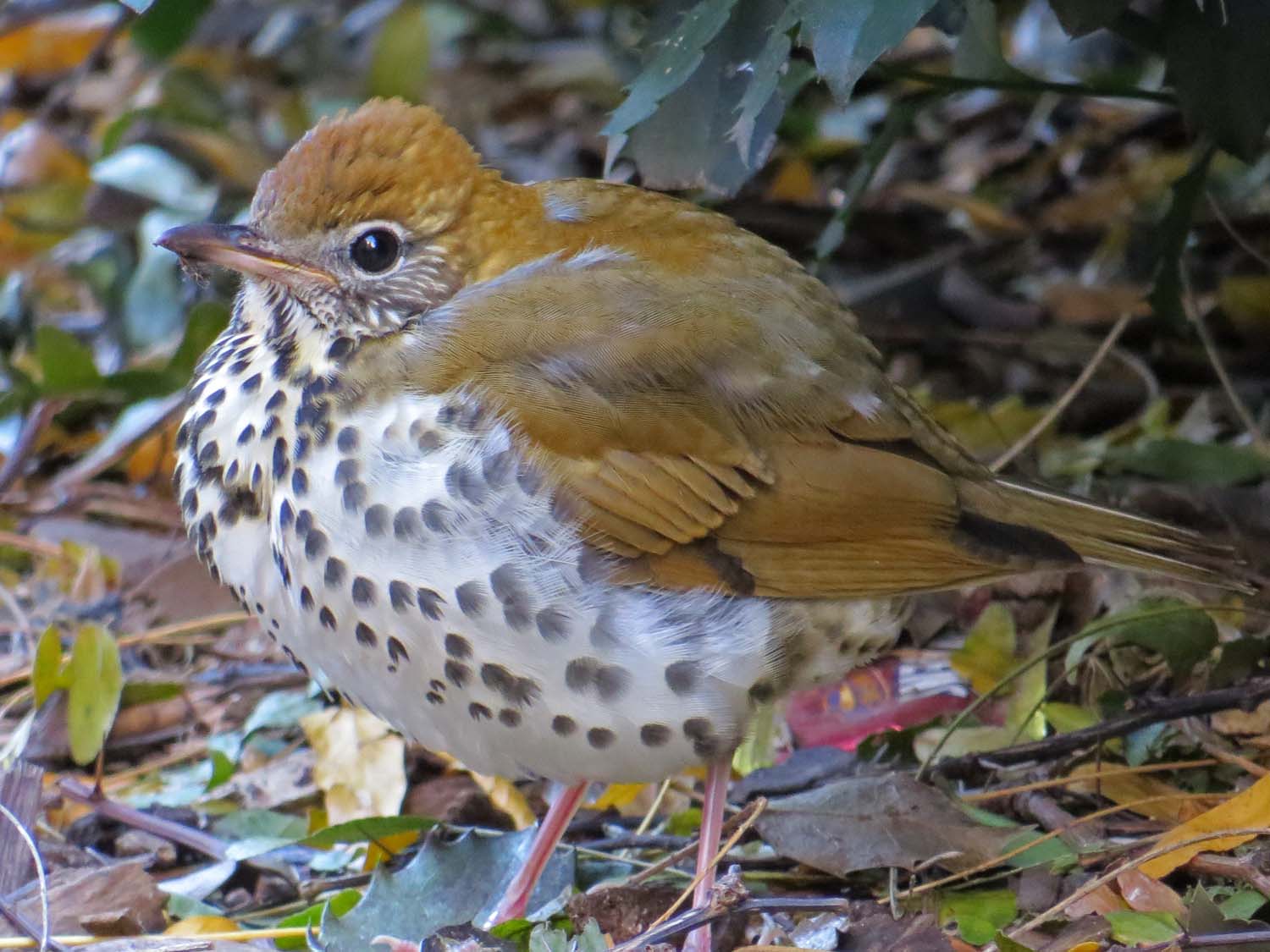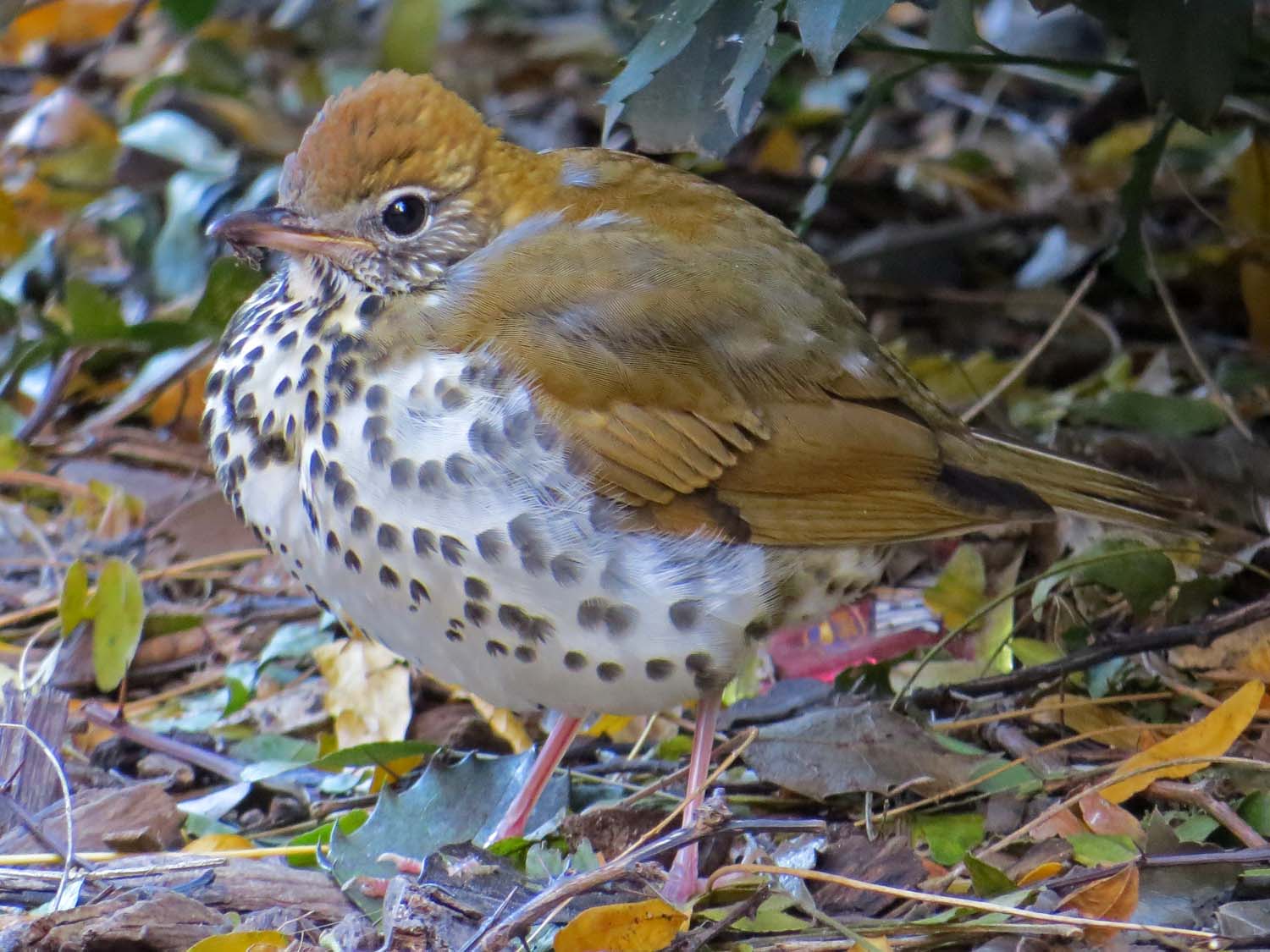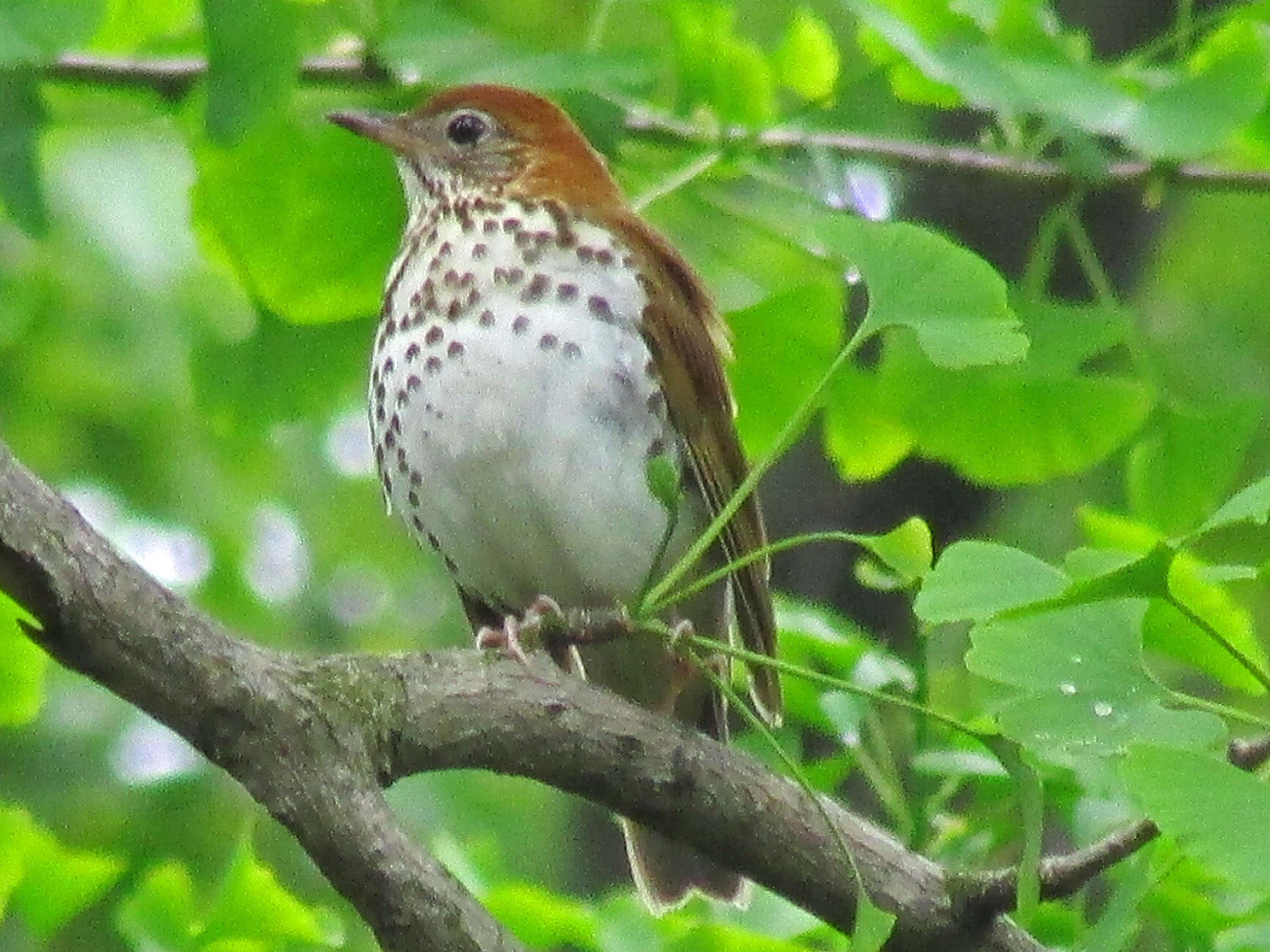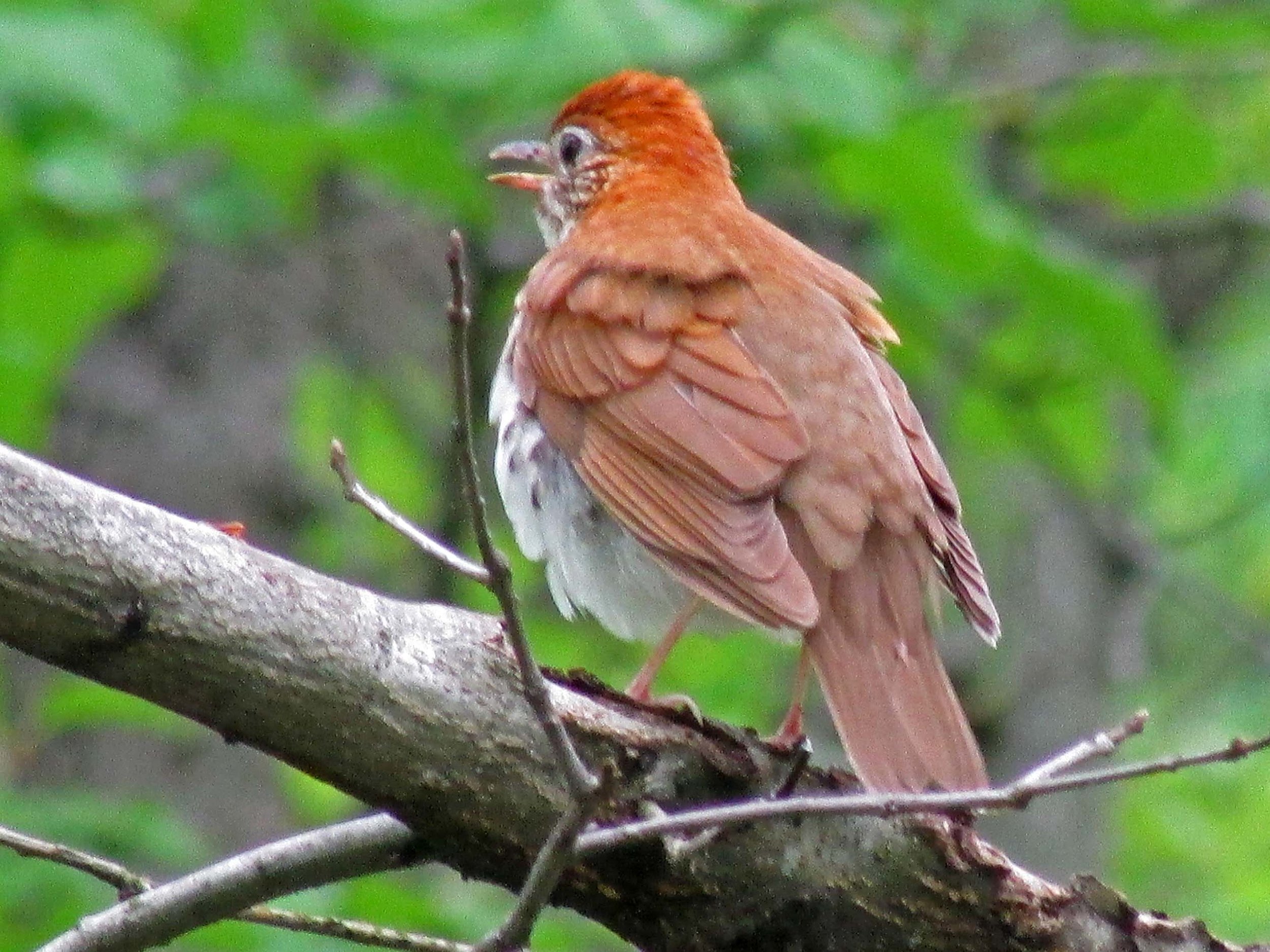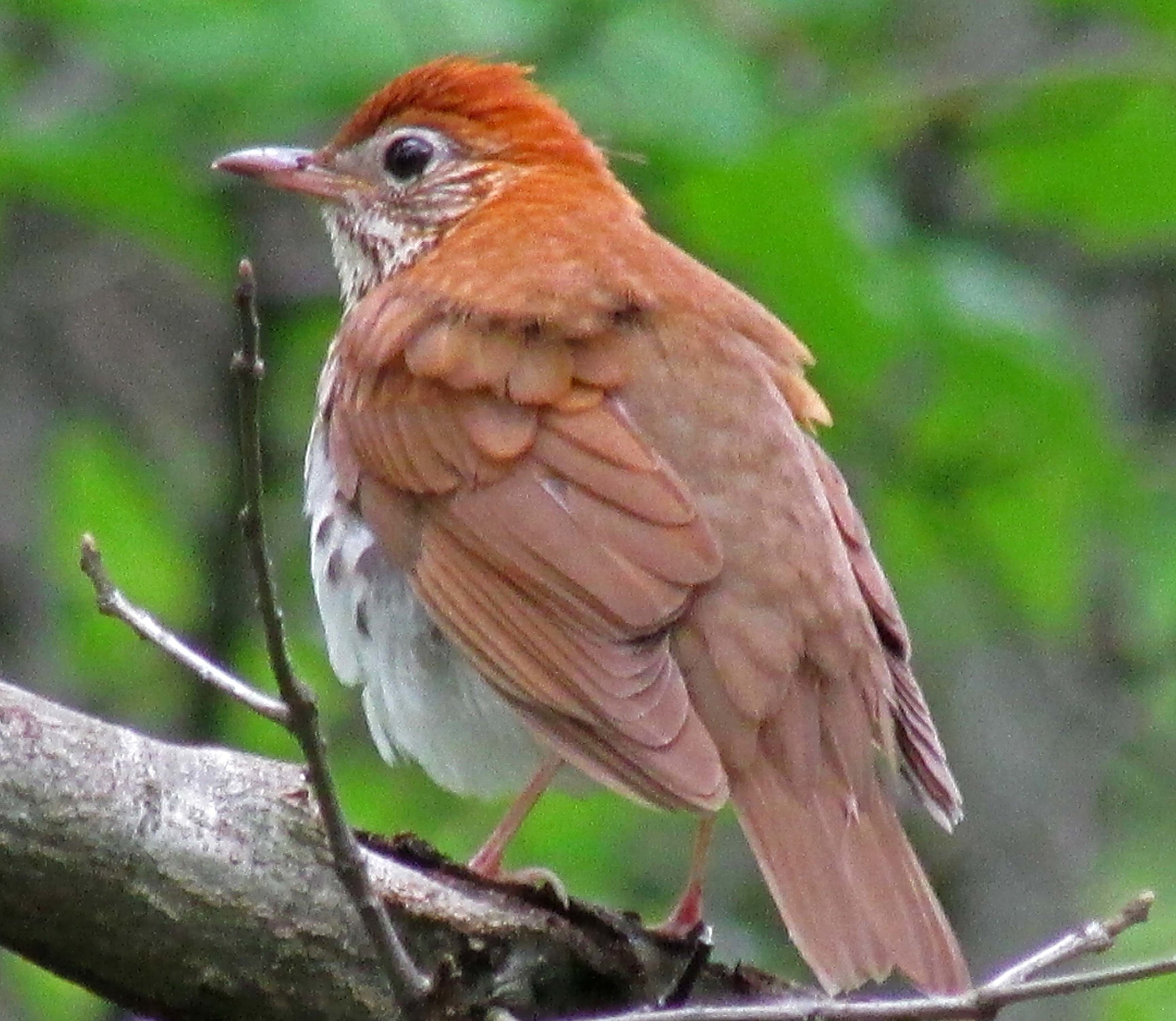“. . . The tide
Is higher or lower. He couldn’t tell you which.
His beak is focussed; he is preoccupied,
Looking for something, something, something.
Poor bird, he is obsessed!”
Sandpipers (order: Charadriiformes) often visit Central Park and Muscota Marsh (immediately north of Inwood Hill Park) during migration and give us a few days of delight as they run up and down the mudflats, lakeshores and salt marshes. I've seen three kinds of these shorebirds in the last few years: Solitary Sandpipers, Spotted Sandpipers and Least Sandpipers.
Spotted sandpiper on the shore of the Lake, Central Park, May 1, 2017
In The Sandpiper, Elizabeth Bishop really captures the sandpipers I've seen when she writes, "Poor bird, he is obsessed!" The sandpipers can't seem to stop, can't seem to take a rest as they hunt for food, or fly off briefly and then come back, only to bob and peck and peck and bob some more.
Solitary sandpiper, near the compost heap in northern Central Park, April 27, 2017
When I was putting together the spotted sandpiper video, I found footage of sandpipers from 2015 at Muscota Marsh, but could tell the birds were neither the solitary nor the spotted sandpipers I'd seen recently. I asked around, and was told by a superb young birder that these were least sandpipers. I believe him, but if someone disagrees, let me know and I'll do more research! These sandpipers are the smallest of the three, and are part of the group of five small sandpipers known as "peeps."
Least sandpipers, Muscota Marsh, Aug. 13, 2015
I've now done three videos of sandpipers: in Central Park, solitary sandpipers I saw on April 27 this year in the mudflats south of Conservatory Garden; spotted sandpipers I saw on May 1, 2017, at the Lake, and in April, July and August 2014 at Turtle Pond and the Pond; and a pair of least sandpipers I saw at Muscota Marsh on Aug. 13, 2015. The composers I used vary, but all the music features flutes for the pipers.
Here are more photos of the solitary sandpipers (Tringa solitaria) I saw flitting around the mud near the compost heap on April 27. They lived up to their name: I watched three or four solitaries that day, and only once did one approach a second bird, only to be shooed off immediately.
This grouping shows the spotted sandpiper (Actitis macularius) I watched on May 1 of this year at the Lake.
This group shows spotted sandpipers seen in Central Park in 2014 in April, July and August.
The least sandpipers (Calidris minutilla), with their yellow-green legs and round bodies.




